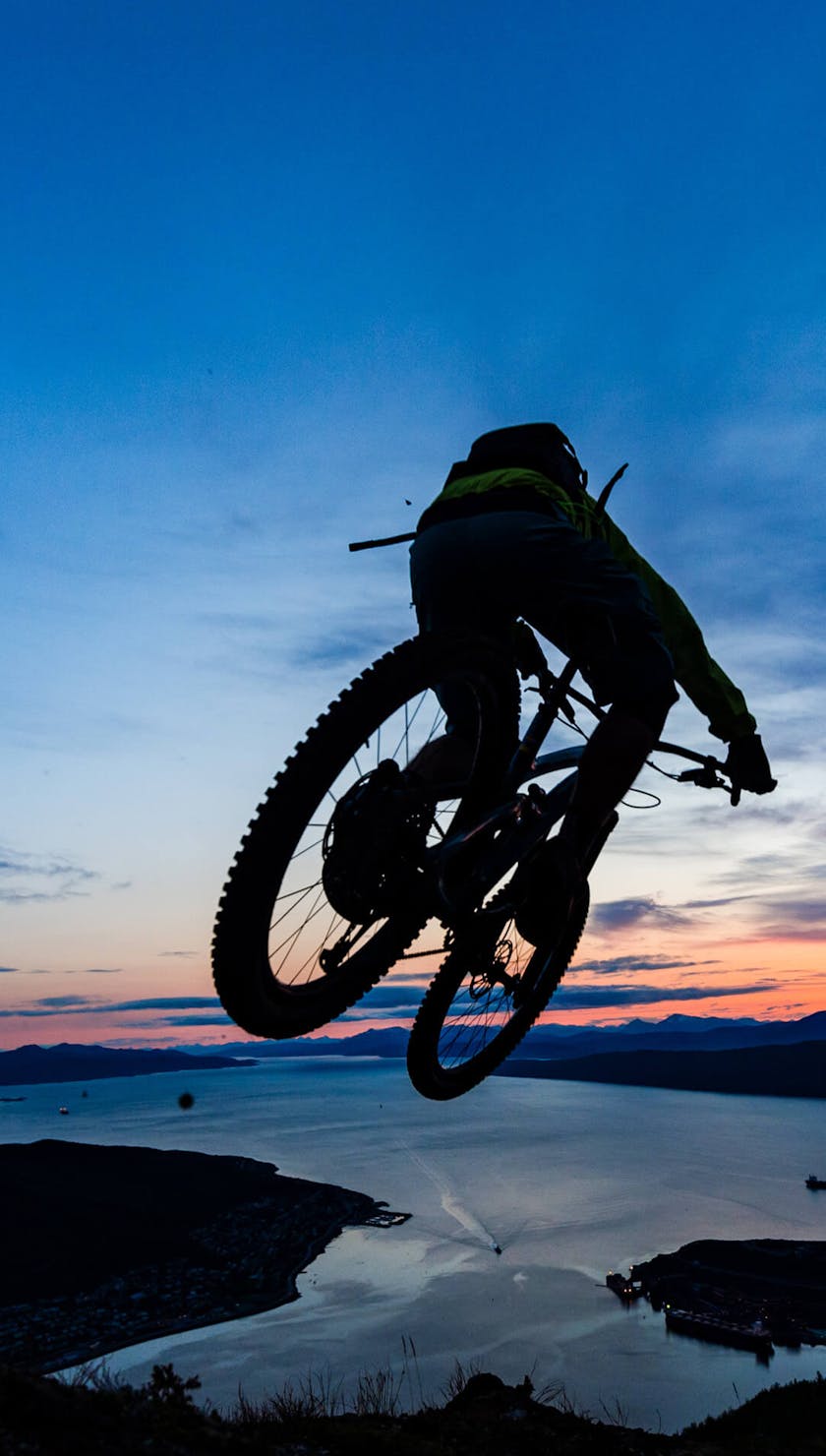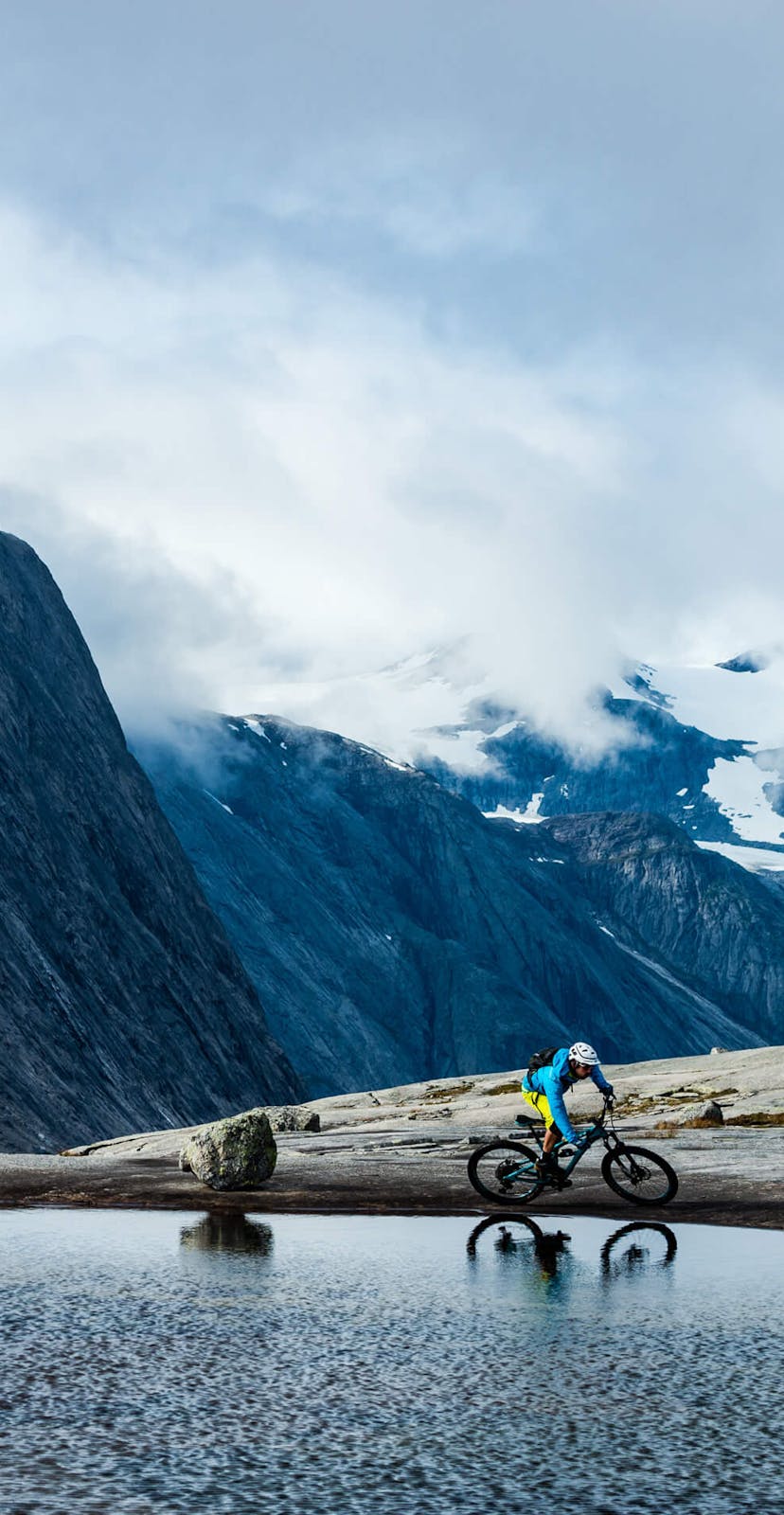
ADVENTURES
IN FJORDLAND
ADVENTURES IN FJORDLAND
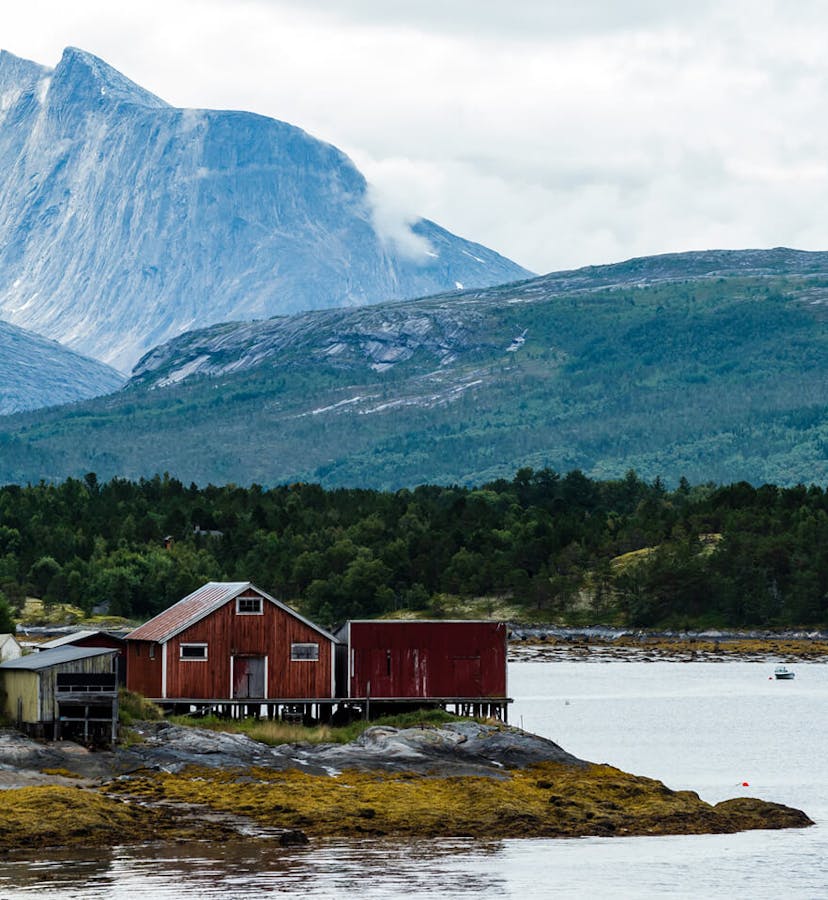
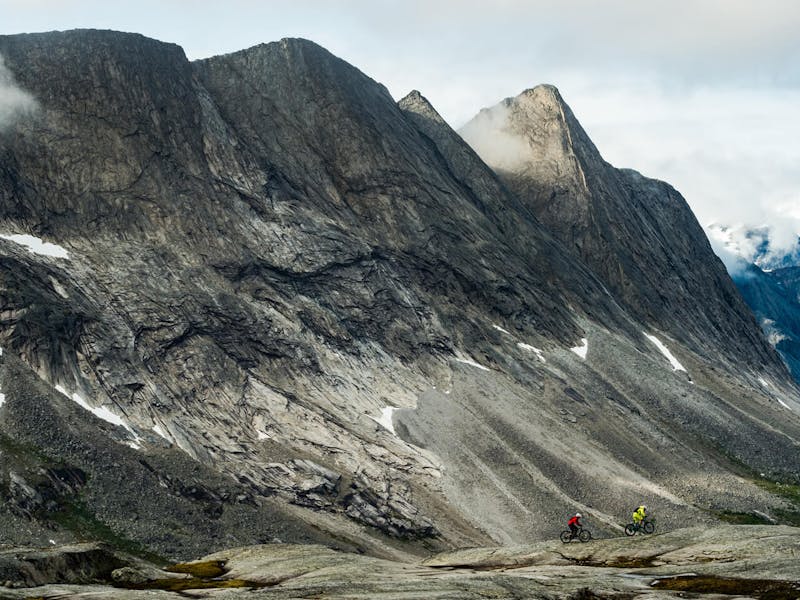
ON THE 68TH PARALLEL, 200 KILOMETERS INSIDE THE ARCTIC CIRCLE, WE ARRIVE WITH OUR BIKES. NORTHERN NORWAY IS KNOWN MORE FOR ITS WINTER ADVENTURE AND EIGHT-MONTH-LONG SKI SEASONS, BUT WE ONLY SEE THE POSSIBILITIES BEFORE US.
On the 68th parallel, 200 kilometers inside the Arctic Circle, we arrive with our bikes. Northern Norway is known more for its winter adventure and eight-month-long ski seasons, but we only see the possibilities before us. The dramatic landscape carved through the ice ages, as remains of ancient mountain ranges were eroded down to sea level and later lifted. Further exposed to harsh winds and water flows, Mother Nature has crafted a natural bike park in a simply stunning location. In the next week, our spirited crew of three plans to ride as much of it as we can.
The drive to the trailhead follows the shoreline of the fjord. Mountains rise steeply on the side. Lush, green forests at the valley floor contrast against the emerald colored water. Above in the alpine, the dark granite towers above us.
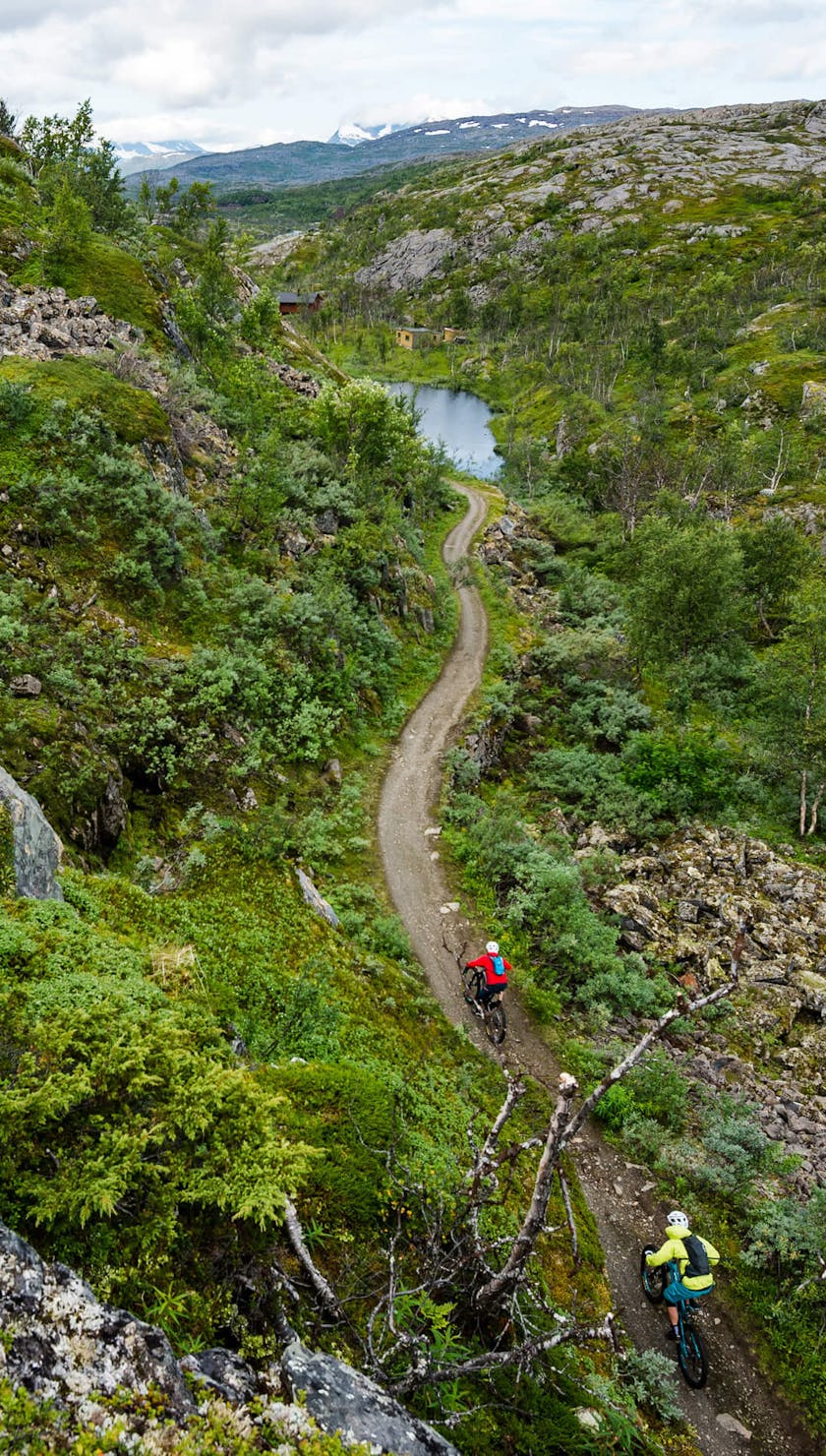

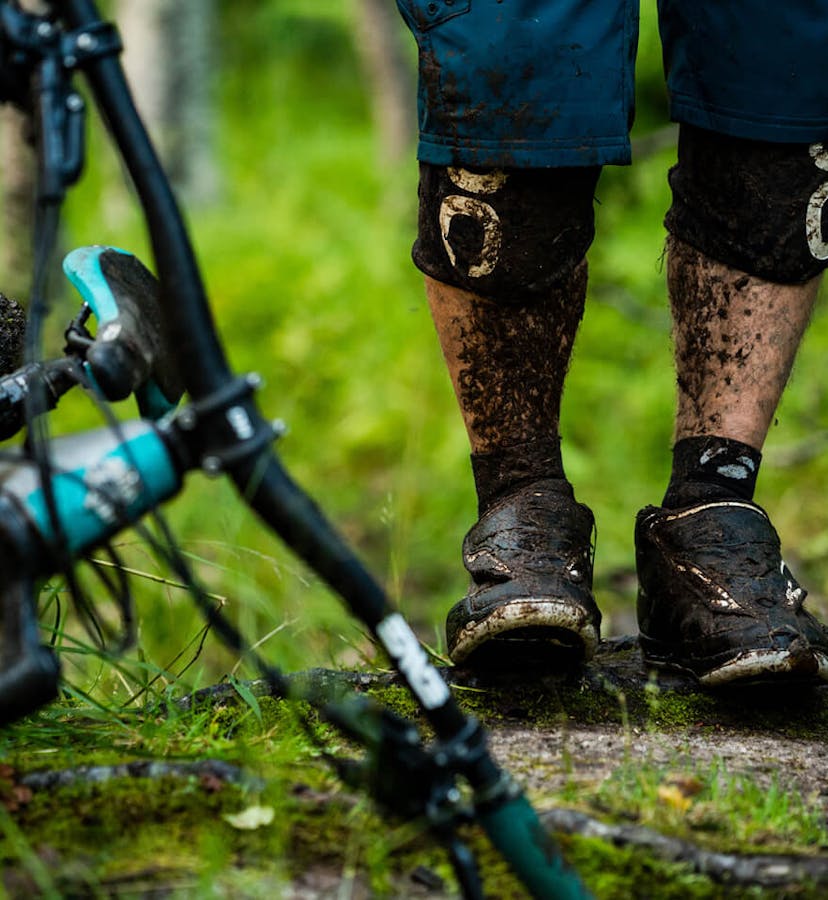

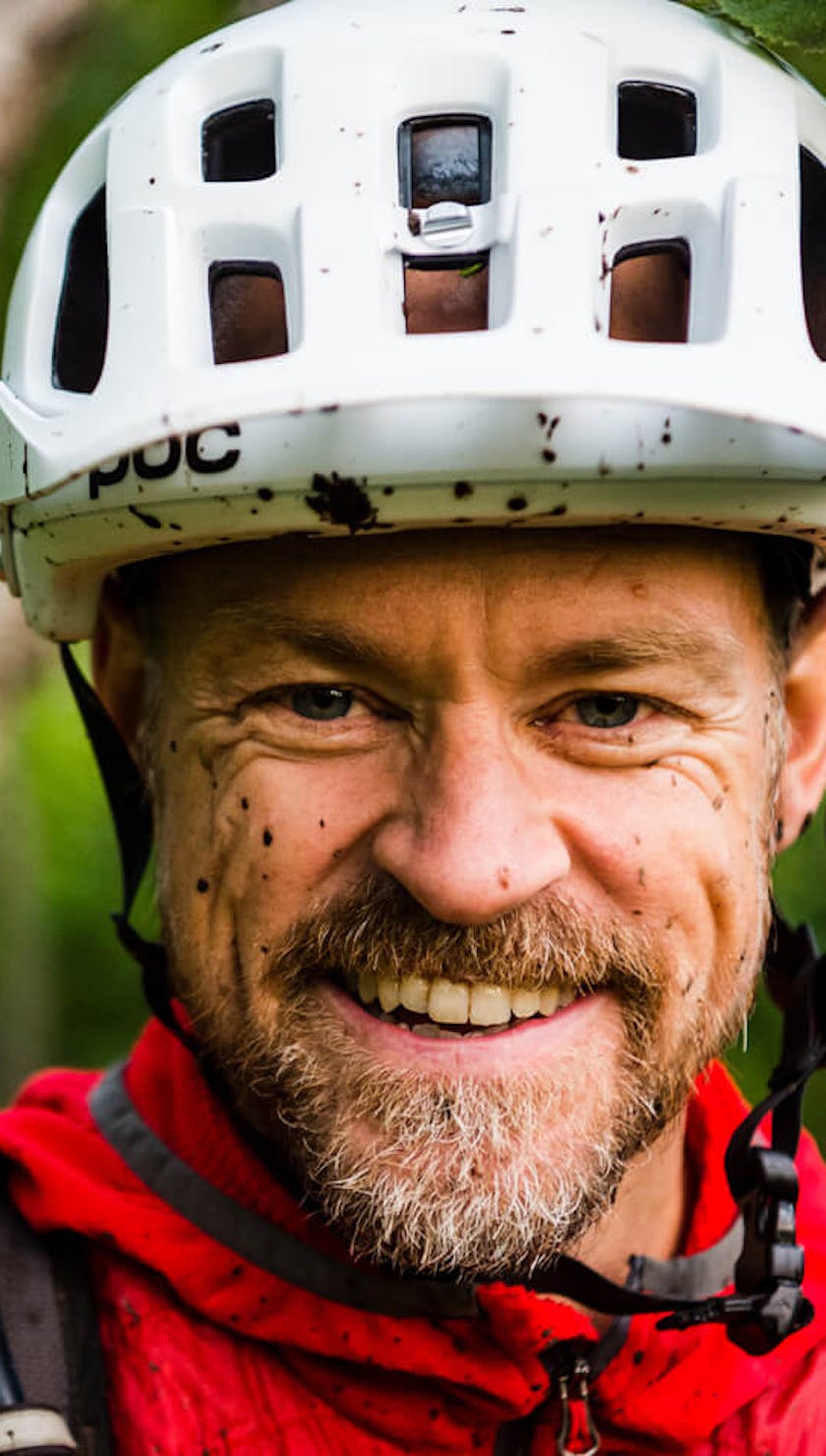
WE HAVE BEEN RIDING IN THE SHADE SINCE WE STARTED IN THE MORNING, MICKE YELPS TO COLORADO NATIVE JOEY SCHUSLER “TYPICAL SCANDINAVIAN WEATHER.”
An hour and a half of pedaling and hike-a-bike in the wet, freezing temperatures and my fingers are numb. A cold I have not felt since last winter. It is only August, but in northern Norway fall comes early. The colors have started to change in the valley, and in the alpine, snow from last winter hides in the grooves of the granite.
My friend Micke af Ekenstam, a local who has lived in the area for 20 years, shows us the way. We have been riding in the shade since we started in the morning. Micke yelps to Colorado native Joey Schusler “typical Scandinavian weather.” Joey, who is in Norway for the first time, sets the pace as our crew of three heads into the alpine mist.
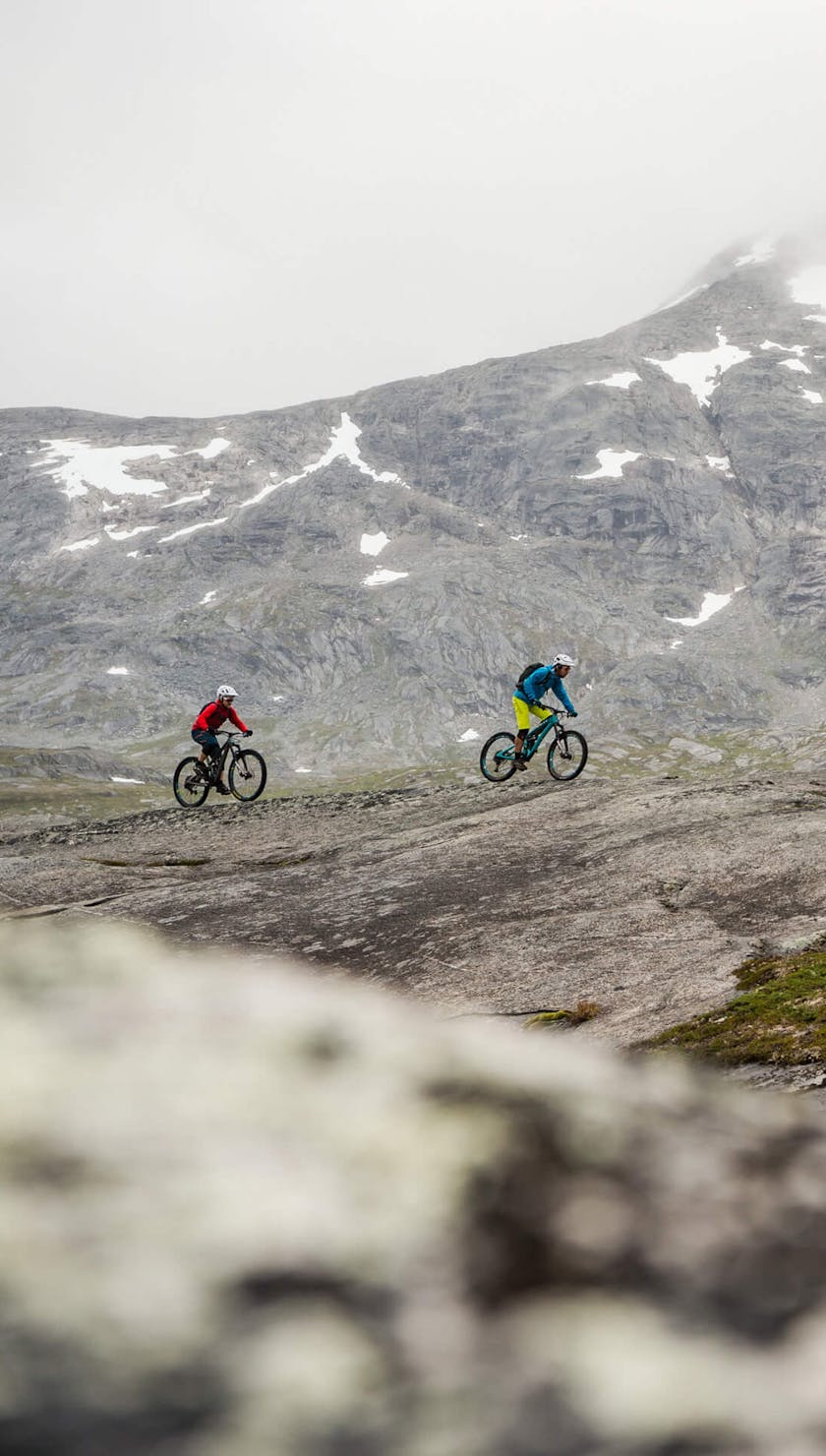
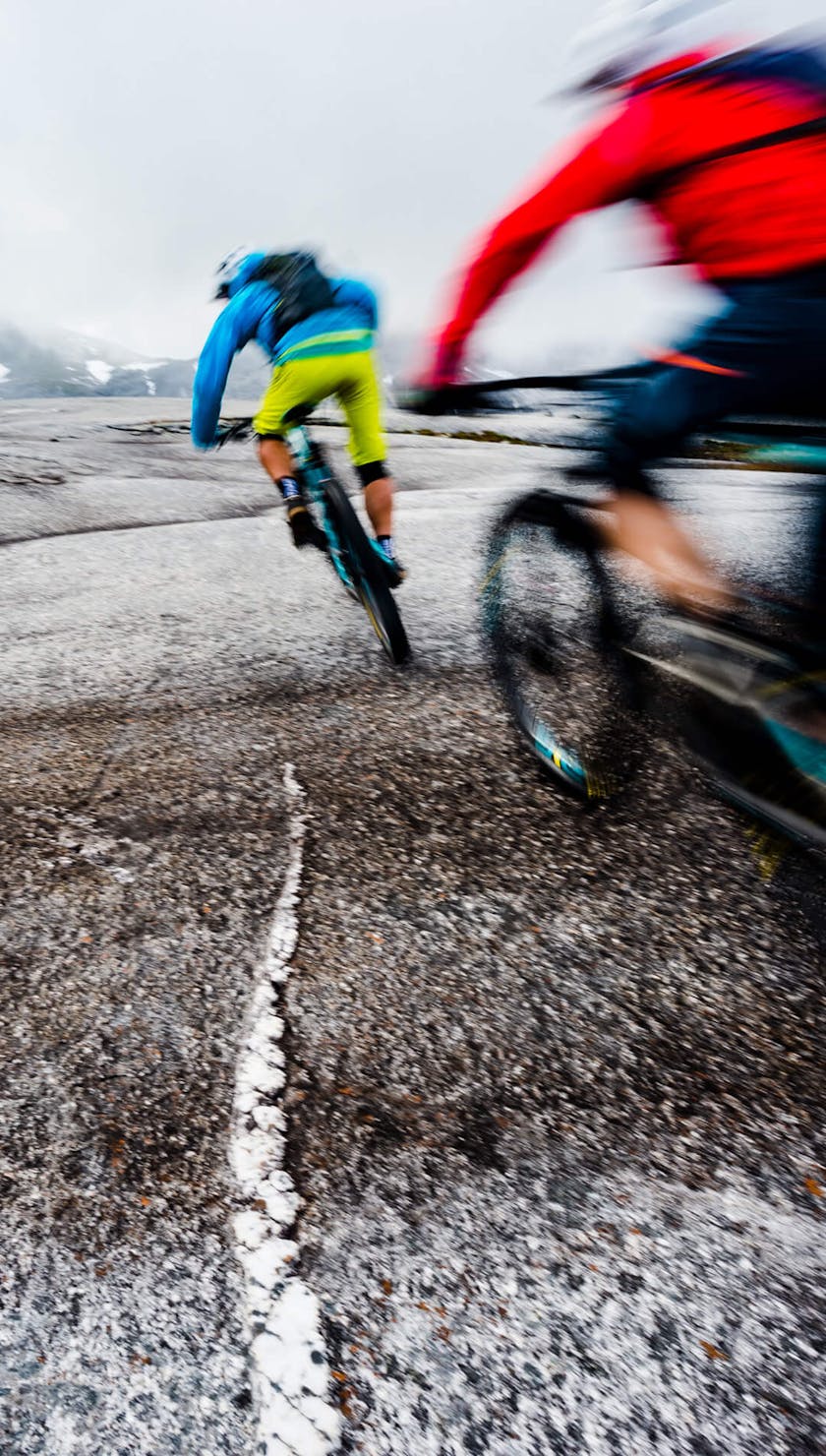
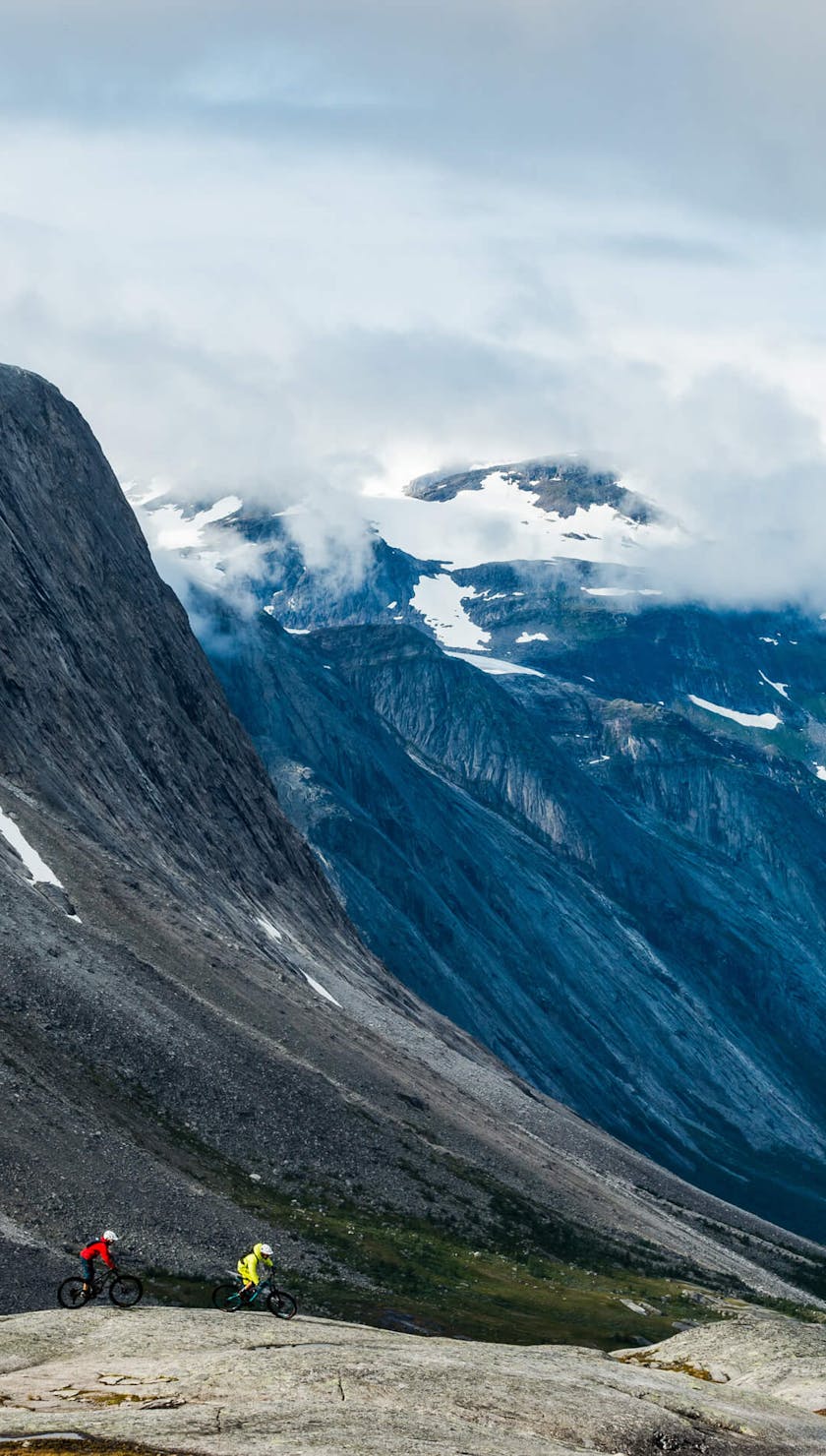
THE DRAMATIC LANDSCAPE CARVED THROUGH THE ICE AGES HAS RESULTED IN A NATURAL BIKE PARK IN A STUNNING LOCATION.
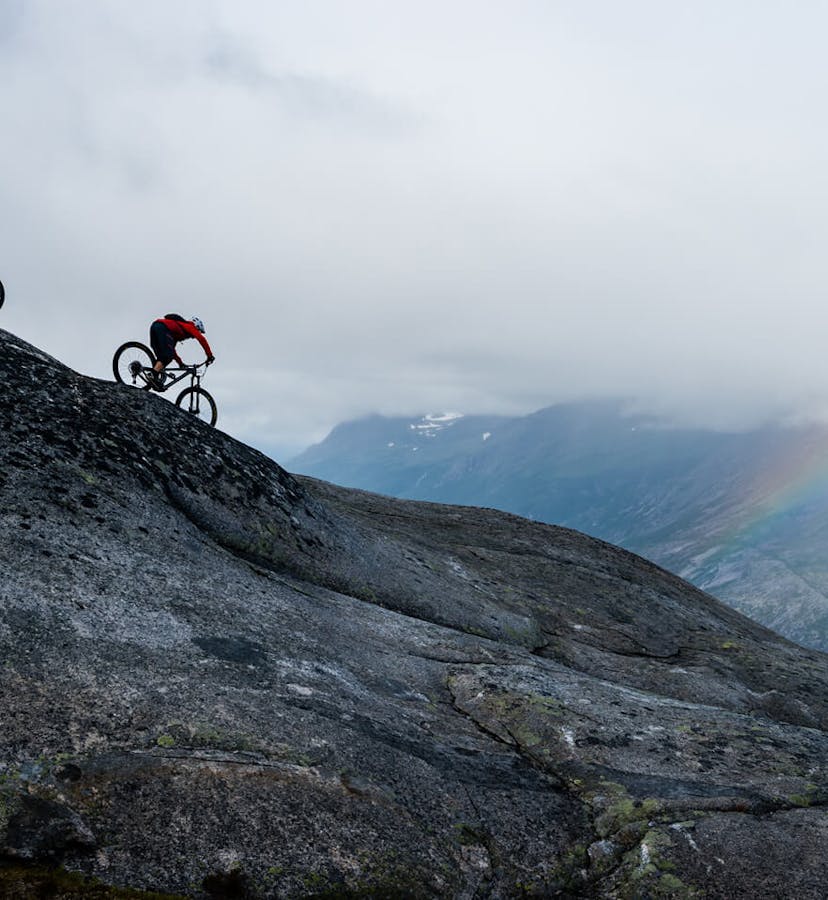

AFTER OUR LONG APPROACH IN THE COLD, WE FINALLY REACH THE PLATEAU 1000 METERS ABOVE THE FJORD. THE SETTING IS SPECTACULAR.
We are in Reinnesfjellet, about one hour south of Narvik, a small town in the region of Nordland. Reinnesfjellet is a 45-kilometer-long and 2-kilometer-wide polished rock ridge of granite with rolling terrain. Around this unique natural phenomena, there are rugged mountain peaks, fjords and small glaciers in the distance. It is an extraordinary place to ride a bike.
After our long approach in the cold, we finally reach the plateau 1000 meters above the fjord. The setting is spectacular. The traction on the granite invokes confidence. We find neat little lines, drops, berms, and features all over the place. There is no specific trail to follow, only small piles of rocks to mark the way, but you can ride pretty much anywhere. We let the playful terrain determine our agenda for the day, as there is no rush and detours are welcome.
Micke points out several couloirs and lines he has skied in the winter, then talks about the history of World War II. The Germans tried to hide their submarines in the tight fjords when the British Airforce set off to hunt them down. The region around Narvik was a battlefield at the end of the war, and most of the town of Narvik got burnt down.

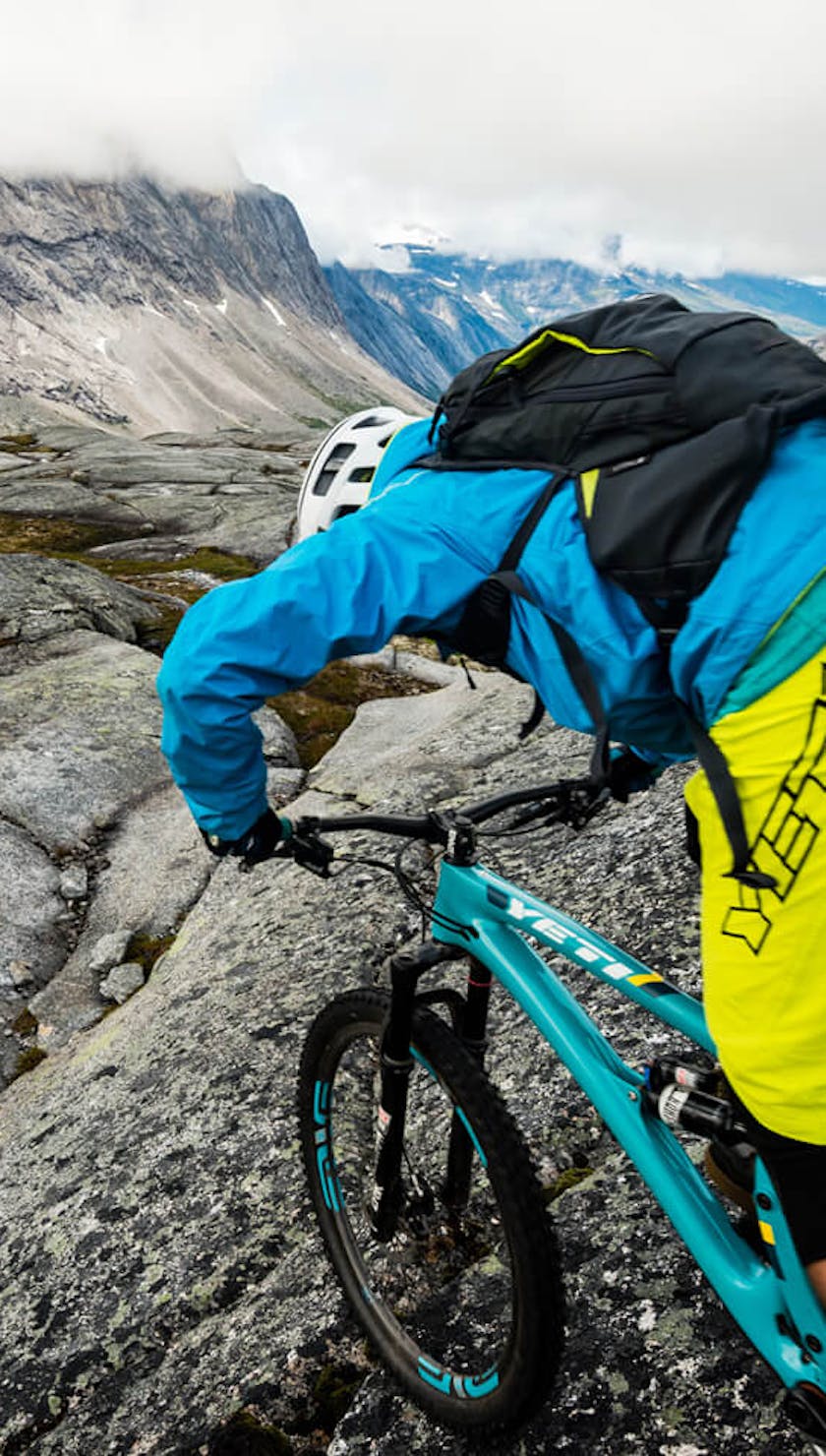
LATE IN THE AFTERNOON, WE DROP DOWN TOWARDS THE FJORD. THE SPEED ACCELERATES QUICKLY ON THE STEEP GRANITE PITCHES AND NERVES TIGHTEN.
Late in the afternoon, we drop down towards the fjord. The speed accelerates quickly on the steep granite pitches and nerves tighten. Pull the coarsest side of a grater against the outside of your thigh, and you get an idea of how a crash will feel on this surface. After a full day on the Norwegian slickrock, we feel pretty comfortable letting it go. The adrenaline is pumping, and the stoke runs high.
Joey challenges things the most, doing drops off a natural cliff into a perfect tranny. Not surprising given his background as a competitive downhill and enduro racer, but Joey's skills go beyond riding. The week before he was in China filming a three-week expedition where nobody had ever taken a mountain bike before. With only a day or so back home in Boulder to recover, he is now leading the charge on a remote rock slab in northern Norway. He plays on his bike the way a spirited child does with a new toy.
Back down at our camp we relax and cook a well-deserved dinner. We salute a great day in the mountains with a few beers and share stories by the fire. There is no internet, no emails and barely any cell service. Nowhere to go, nothing else to do, we just enjoy the moment and dream of the morning descent.
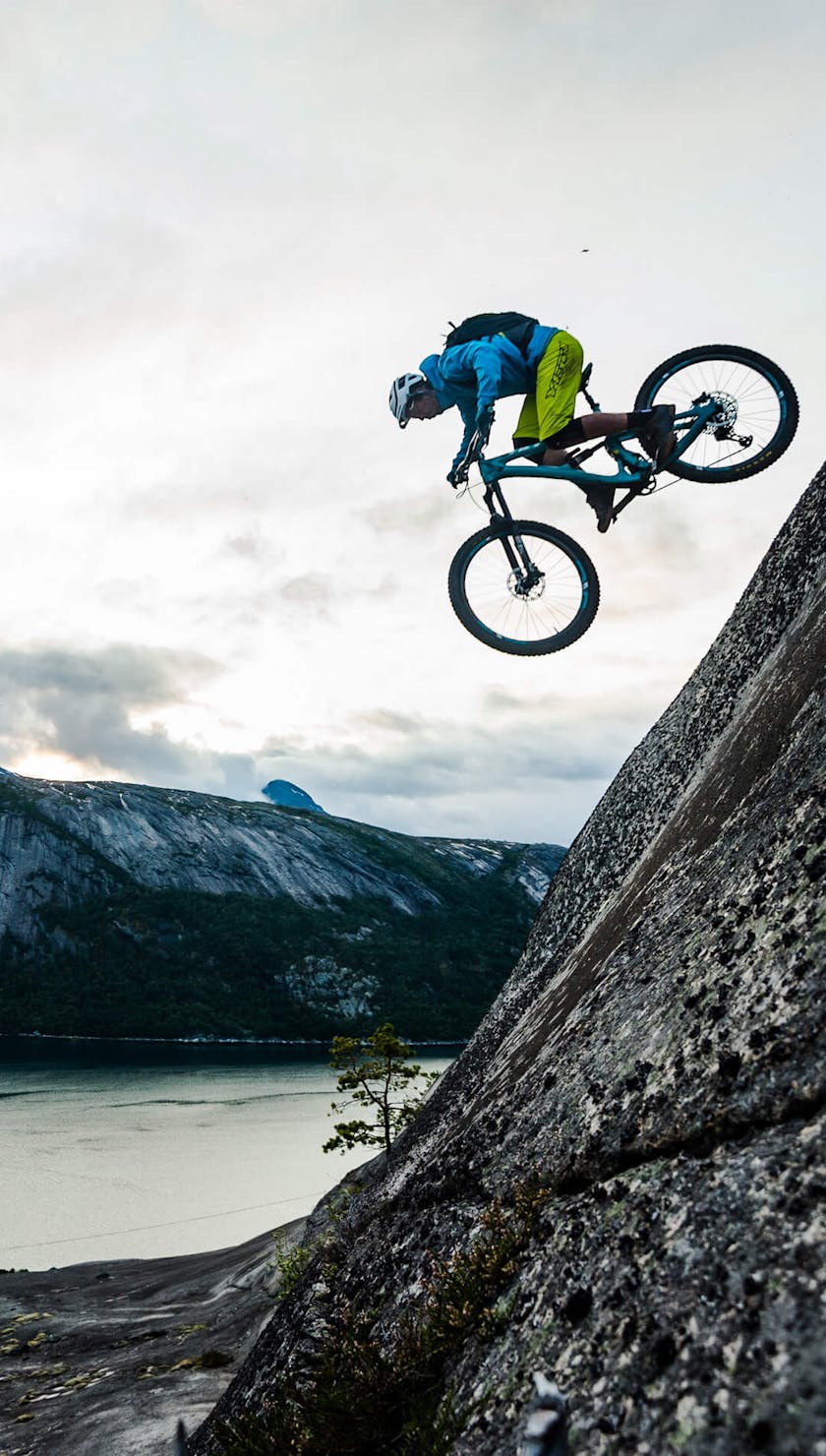
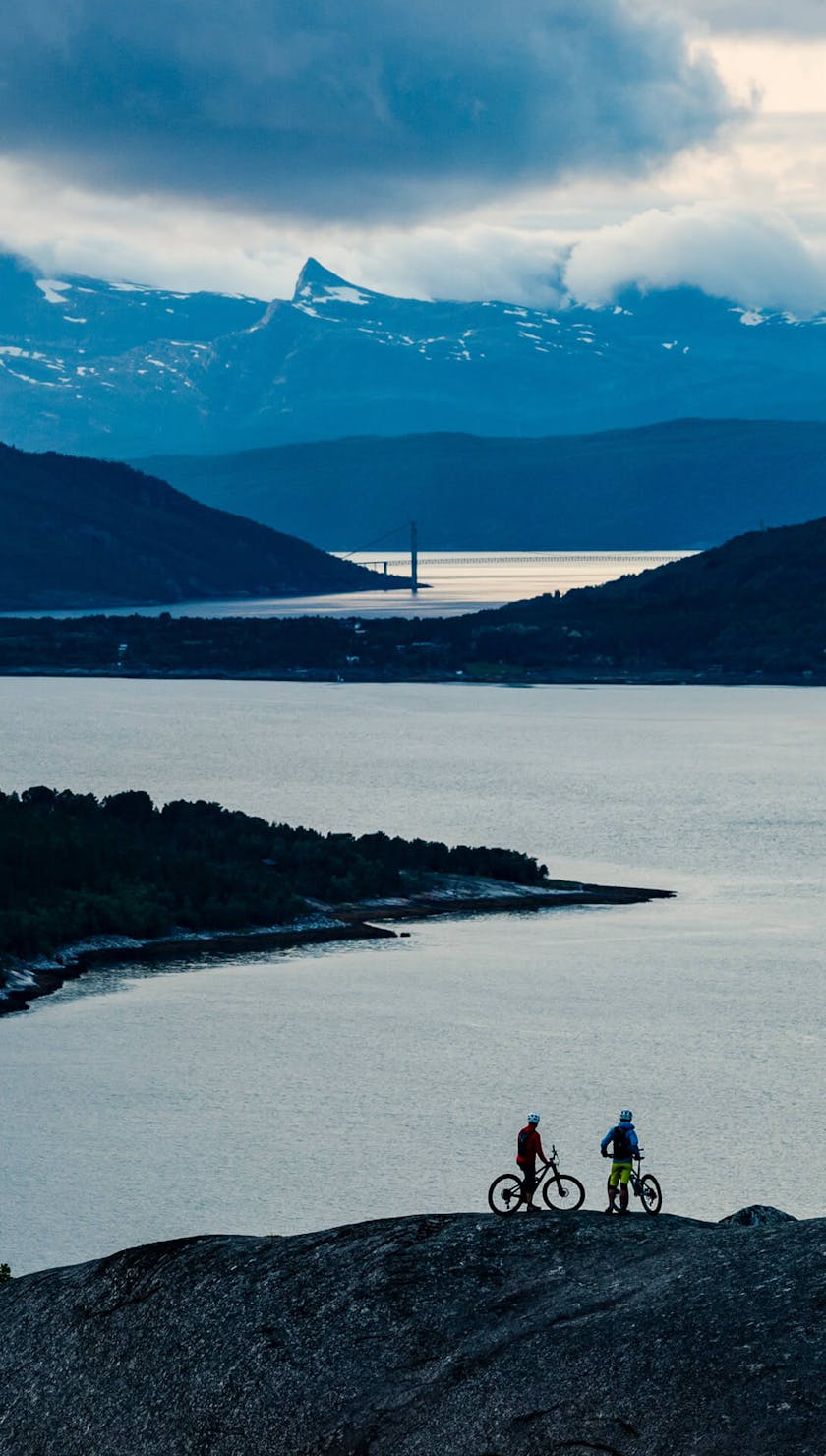
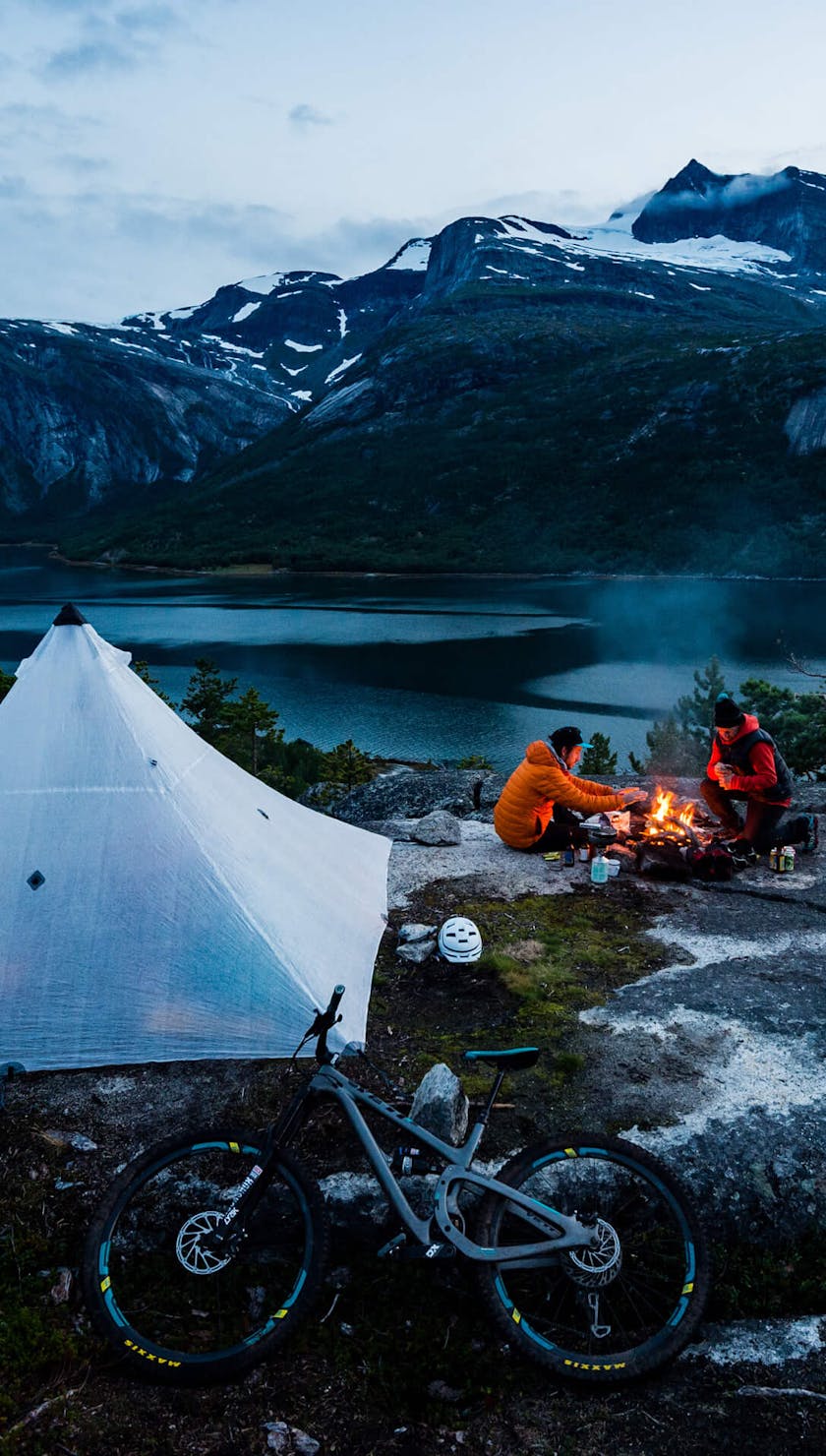
THERE IS NO INTERNET AND BARELY ANY CELL SERVICE. NOWHERE TO GO, NOTHING ELSE TO DO, WE JUST ENJOY THE MOMENT.
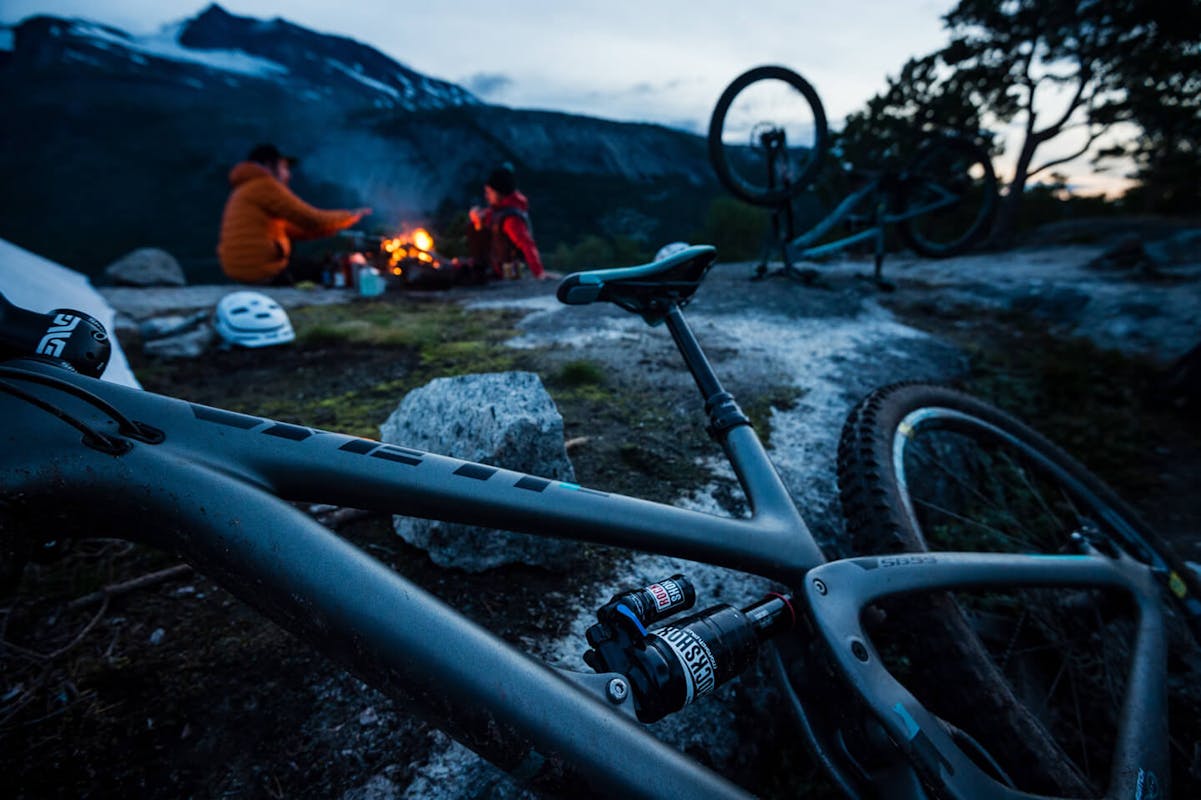
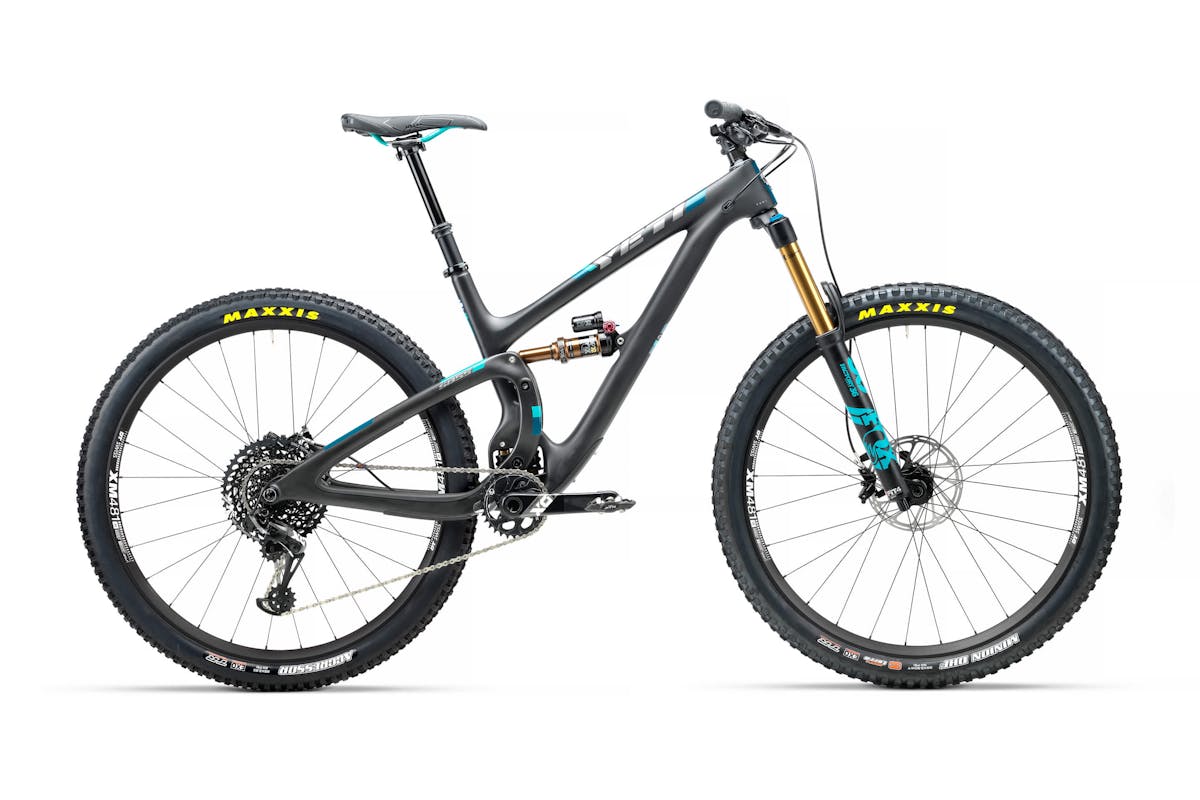
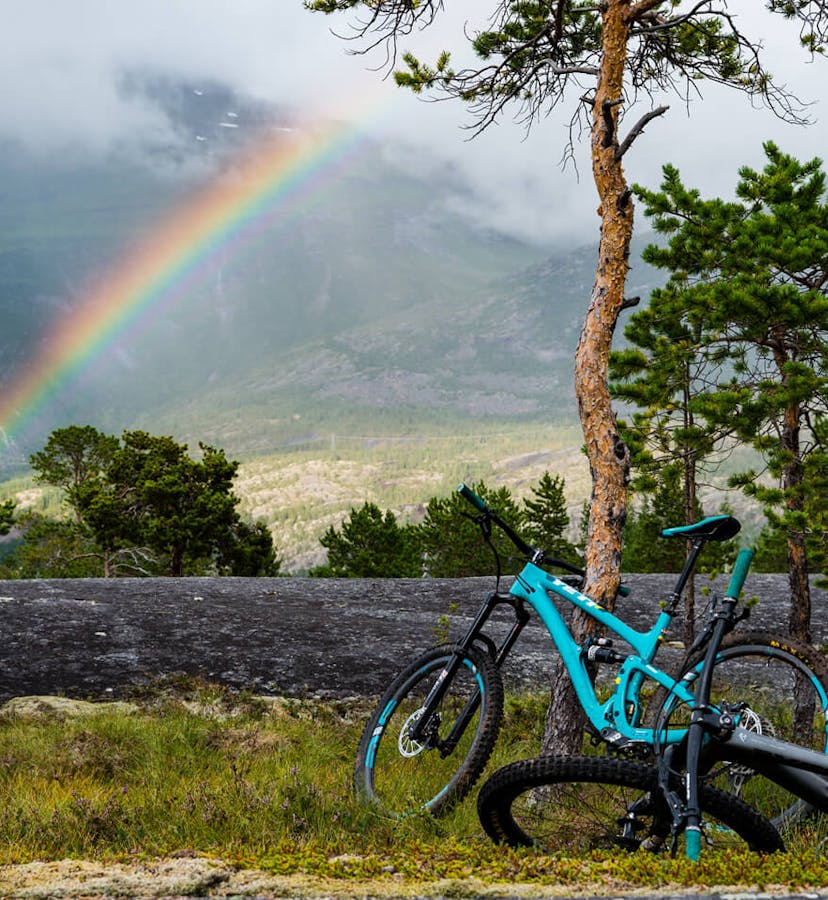

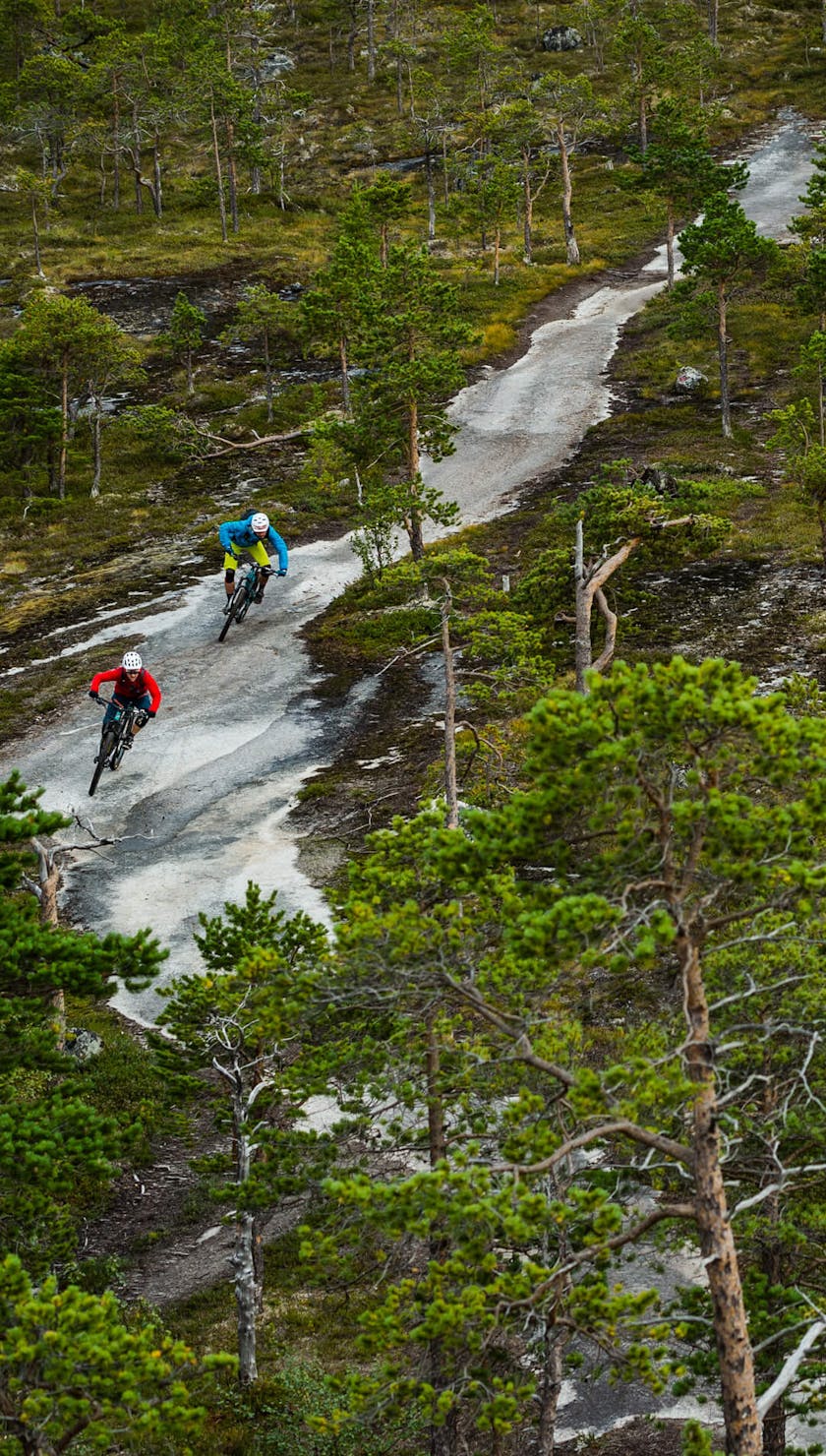

A FEW SPARSE FARMS REMAIN AS A REMINDER OF A HISTORY STEEPED IN FISHING AND AGRICULTURE.
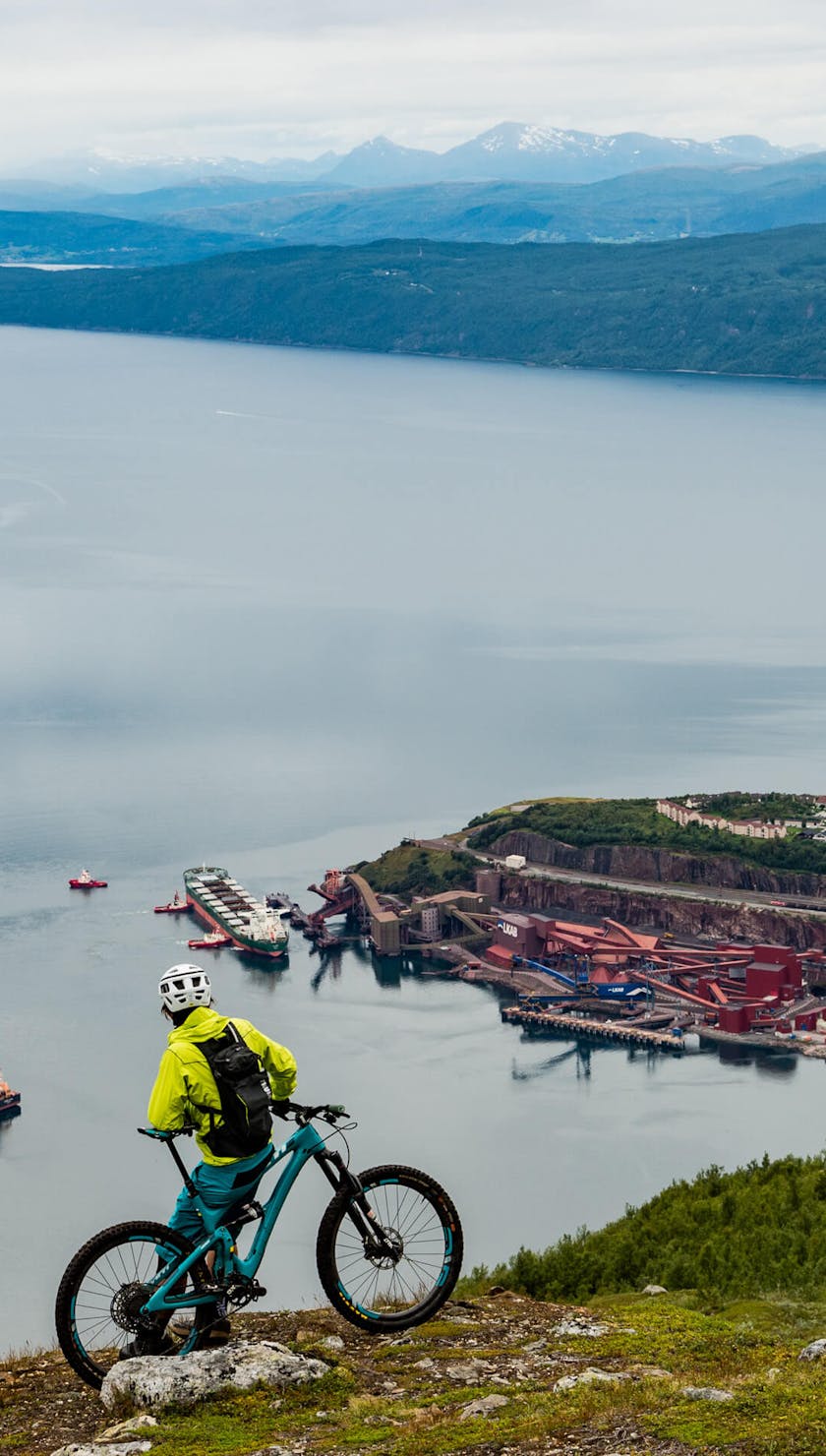

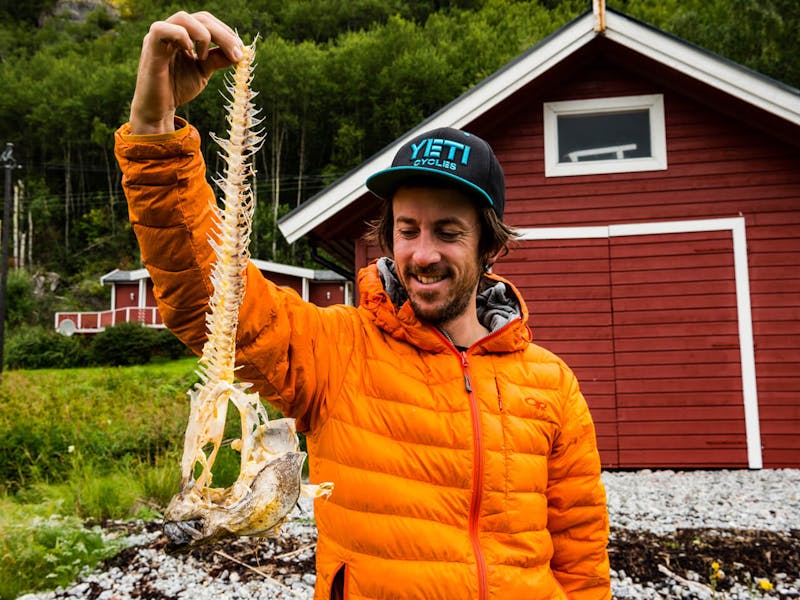
THE NEXT FEW DAYS WE EXPLORE THE RIDING NEAR NARVIK. THE SMALL SHIPPING PORT IS LOCATED STRAIGHT DOWN THE MOUNTAIN, AT THE MOUTH OF THE OFOTFJORDEN.
The next few days we explore the riding near Narvik. The small shipping port is located straight down the mountain, at the mouth of the Ofotfjorden. Much of Narvik’s history is owed to the vast iron mine a couple of hours east in Kiruna in Swedish Lapland. The need for access to an ice-free port to export the iron led to the construction of the Ofotbanen Railway Line more than 100 years ago. What followed was a rapid transformation of the town over the past century. A few sparse farms remain as a reminder of a history steeped in fishing and agriculture.
Mountain biking in Narvik got established in the late 90s. A few enthusiastic locals hand built the long, steep downhill track from the top of Fagernesfjellet, which is served by the gondola lift and has 550 vertical meters of altitude drop. It is still considered one of the finest tracks in all of Scandinavia.
We go up for a lap, as we ride the upper part of the steep trail the town hovers above our handlebars. Micke leads the way down, which takes us to the start of his hand-built trail called Røde Orm (The Red Snake in Norwegian). Now the angle of the slope becomes more mellow, and I let the brakes go, feeling the flow of the trail. Fast sections, berms, technical sections and, of course, some jumps – everything in balance for almost four-kilometers with a vertical drop of 400 meters.
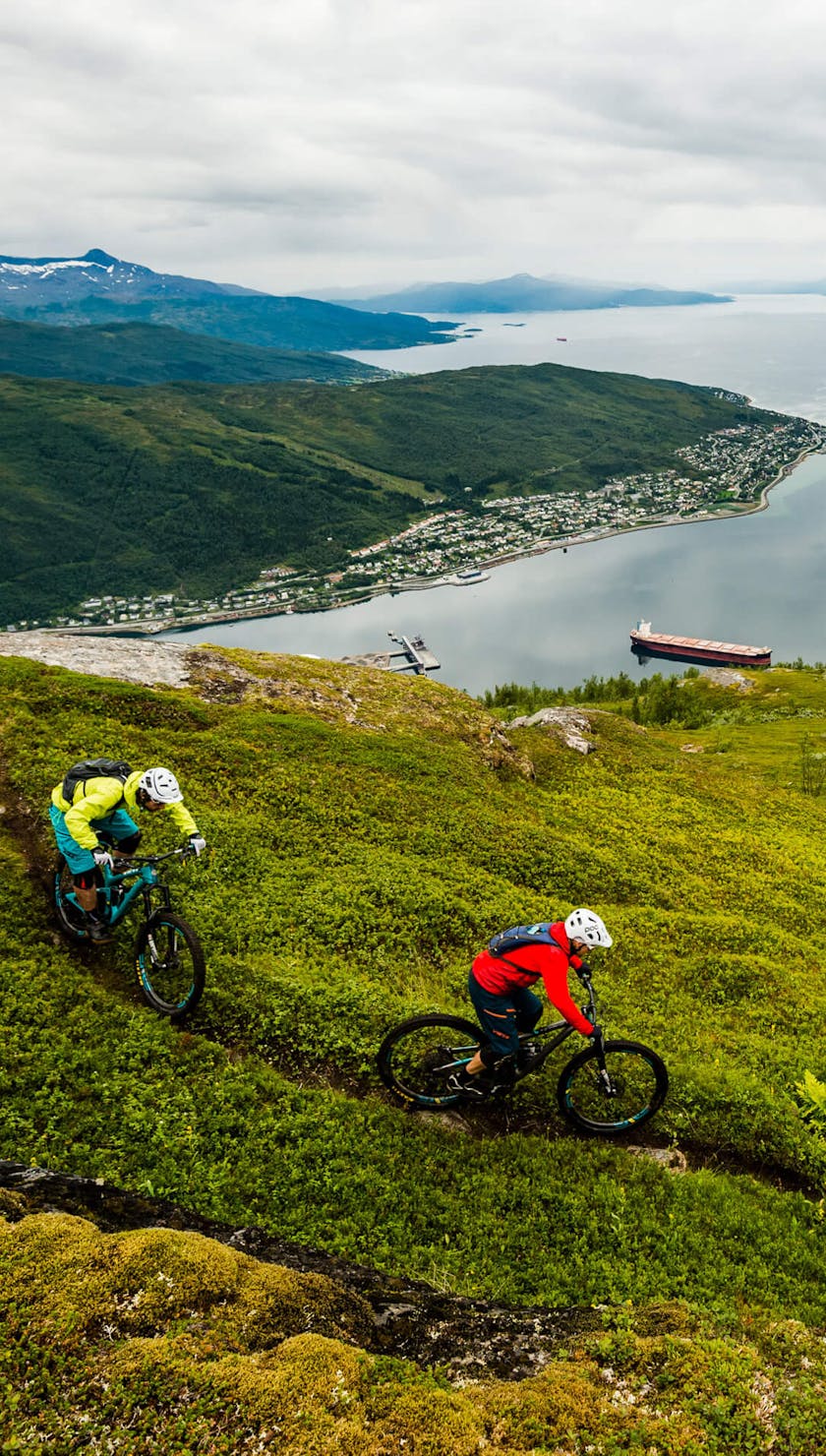
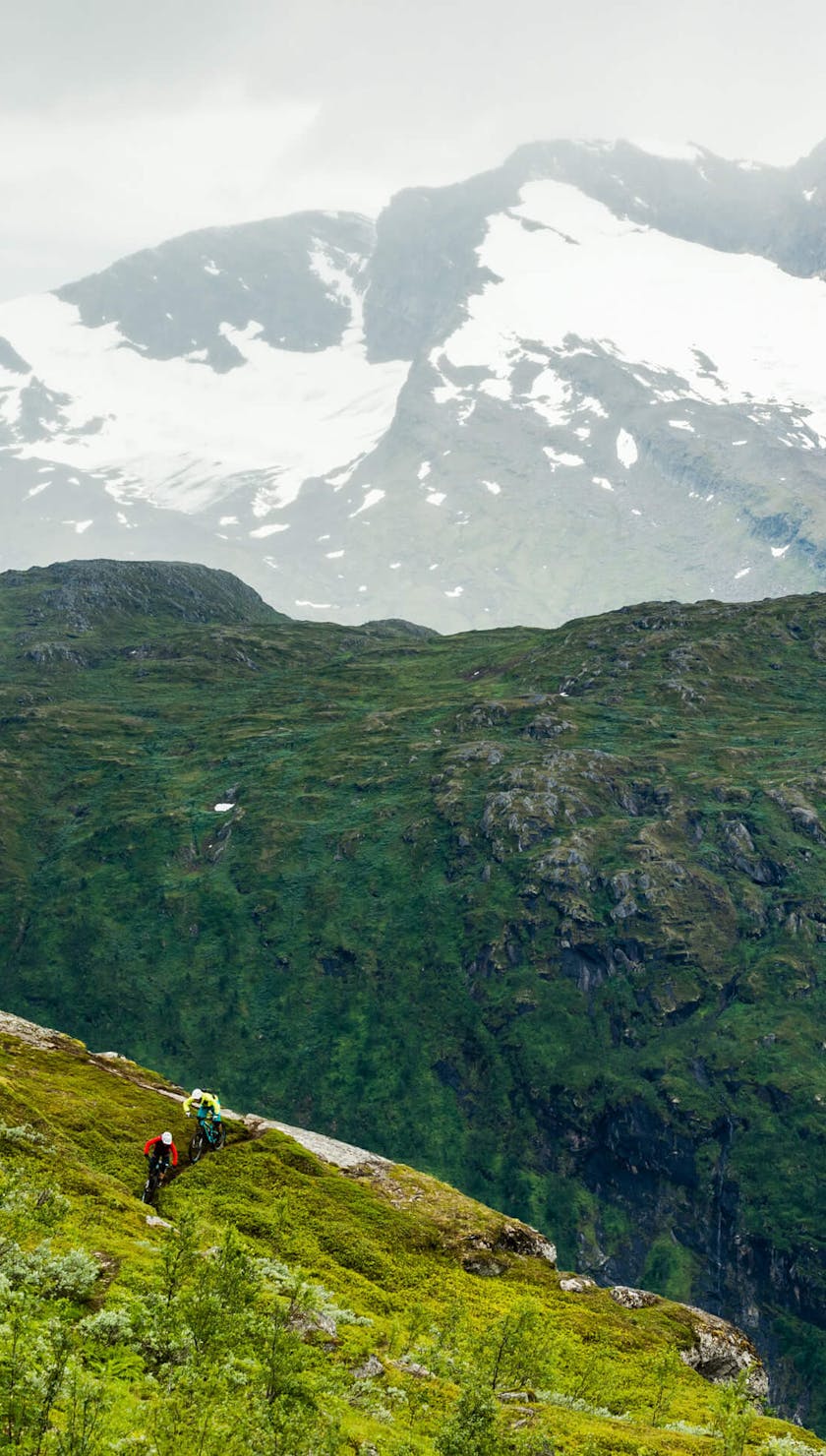
MICKE LEADS THE WAY DOWN, WHICH TAKES US TO THE START OF HIS HAND-BUILT TRAIL CALLED RØDE ORM.
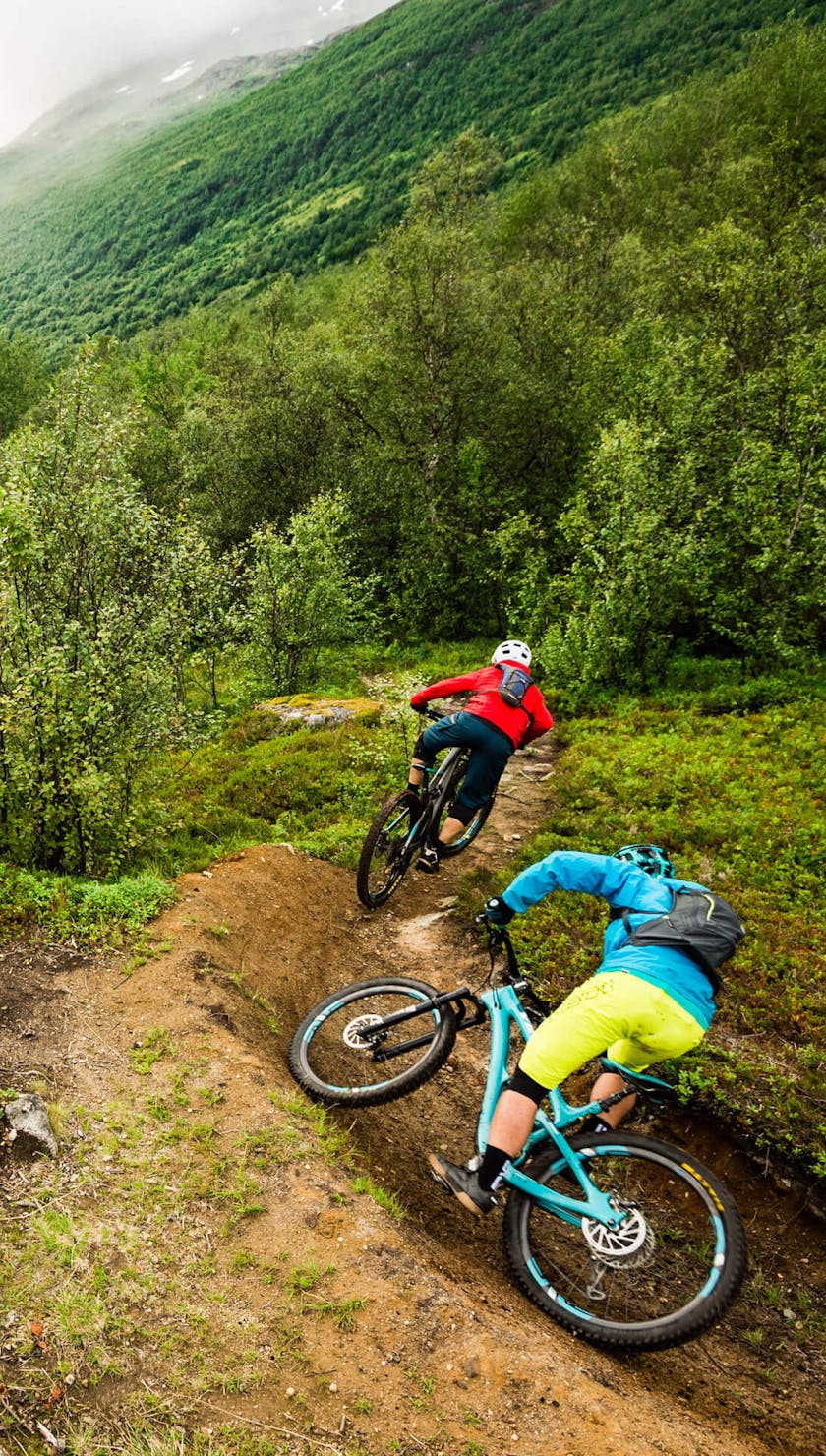
Micke was inspired to build this trail after a bike vacation in Sweden some years ago. Upon returning home, he spent countless hours looking at maps, checking contour lines, and hiking around on the mountain looking for the right place to build. Finally, he found a spot near the top of the gondola lift. With approval from the landowners, his labor of love began.
Chopping soil with a fil hammer and moving rocks around is hard work, but Micke looked at it as training. He spent thousands of hours hand building his trail, mainly because he wanted to share the joy. He joked, “It was not necessary to buy a gym pass once I got started.” Narvik used to be a place for expert bikers only, but this trail has started to change that.
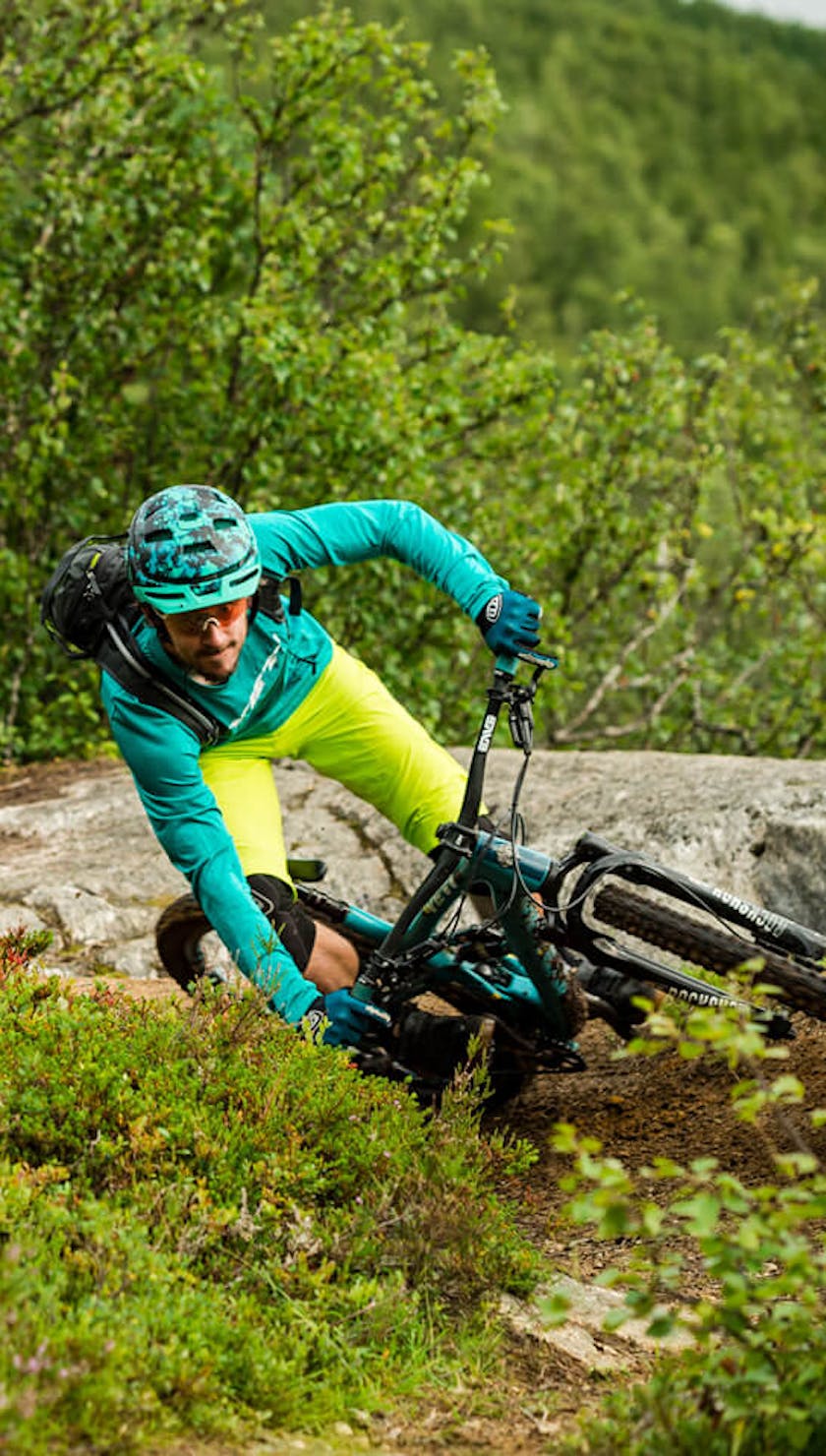
“I QUICKLY LEARNED THAT BUILDING MY DREAM TRAIL WOULD BE A LONG-TERM PROJECT, BUT I WANTED TO HAVE A PLACE ON THE MOUNTAIN FOR MY DAILY DOSE.”
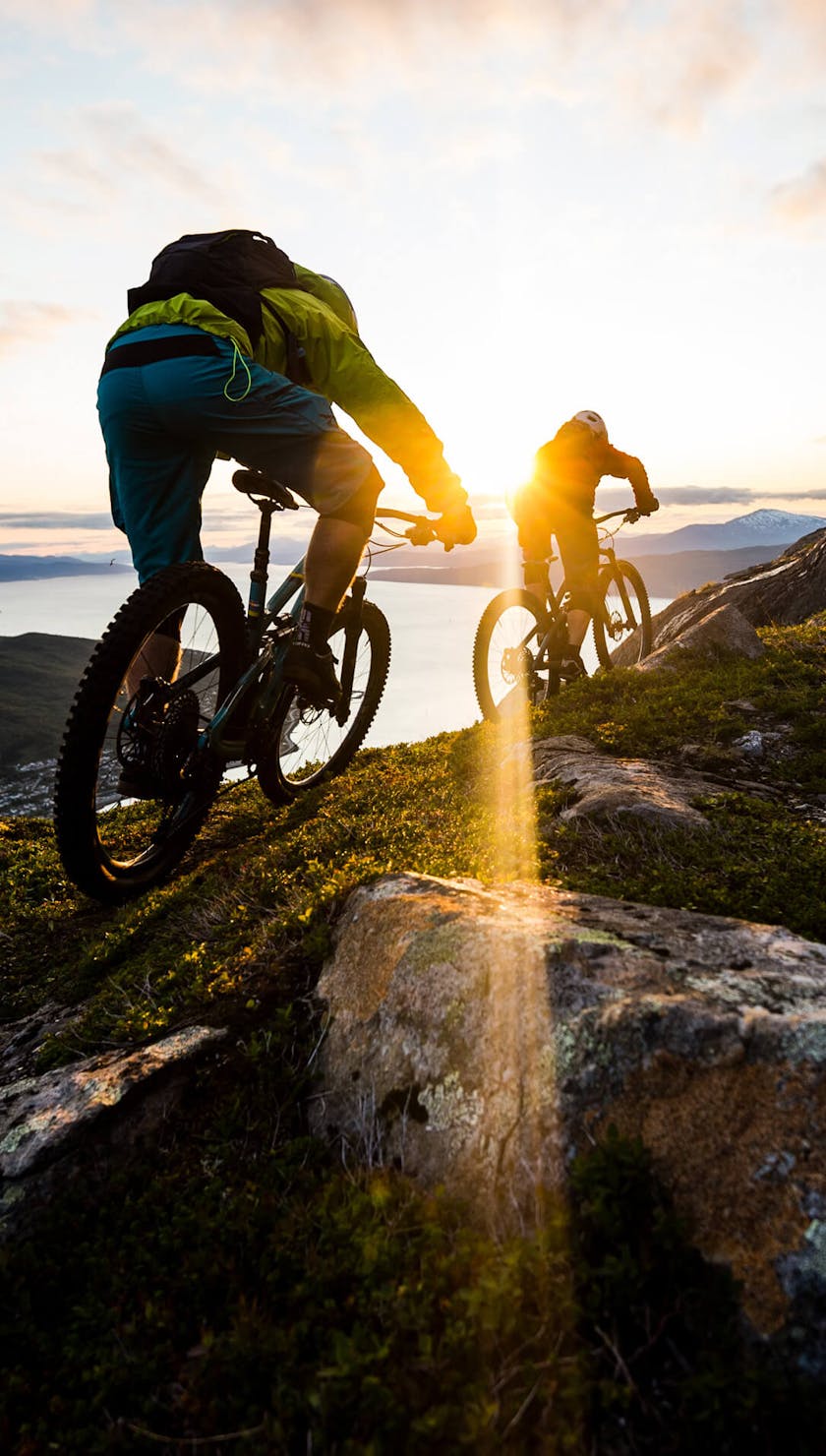
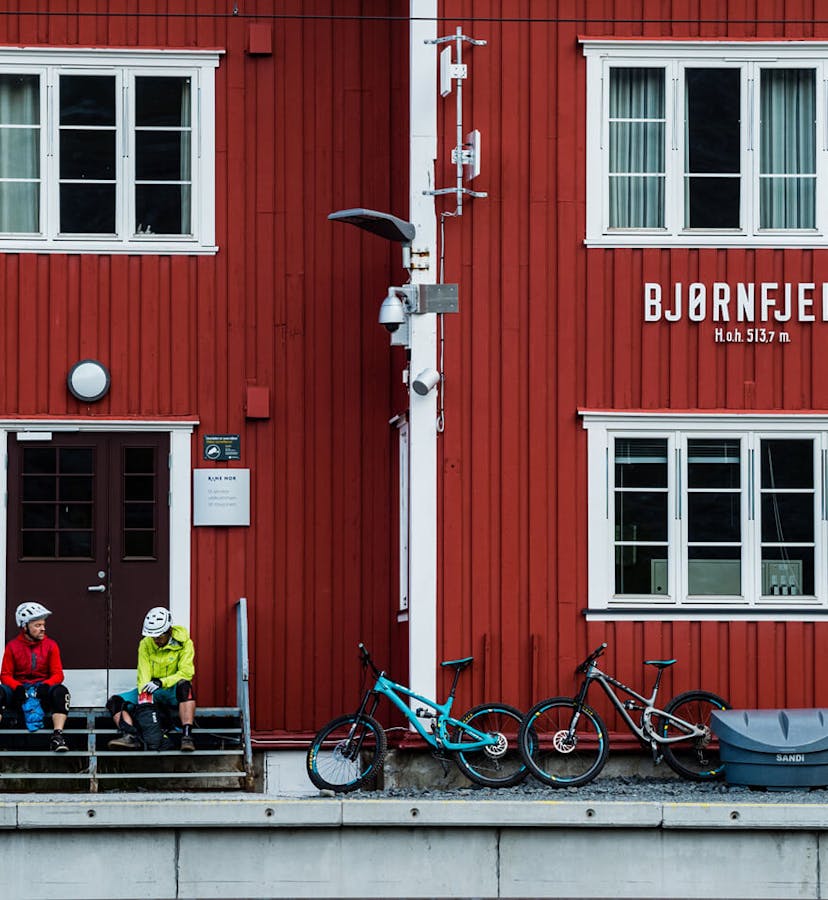
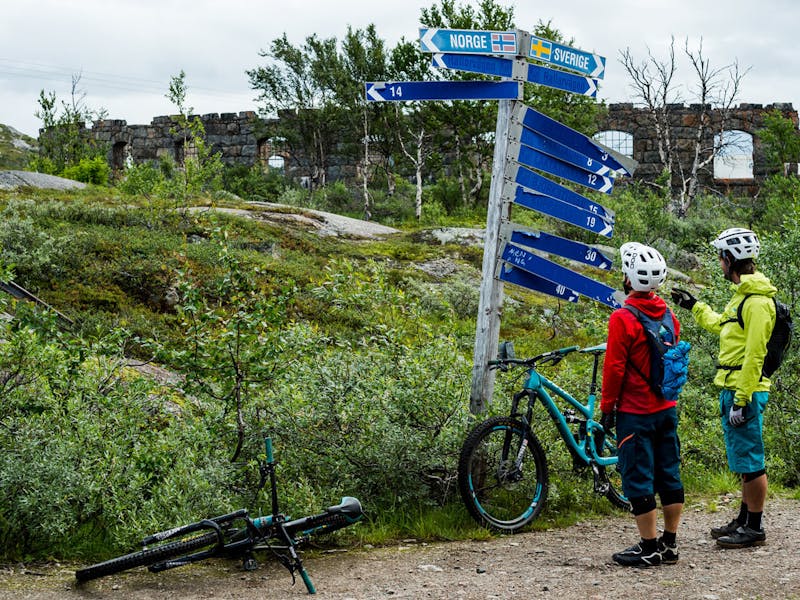
THE NEXT MORNING, WE TAKE THE BUS FROM NARVIK TO RIKSGRÄNSEN IN SWEDEN TO RIDE THE CLASSIC RALLARVÄGEN. IT IS AN OLD TRANSPORT ROUTE ALONG THE RAILWAY SEPARATING NORWAY AND SWEDEN.
The next morning, we take the bus from Narvik to Riksgränsen in Sweden to ride the classic Rallarvägen. Riksgränsen means “land border” in Swedish, and this old transport route along the railway separates the two countries.
The landscape is wild and raw. Above the tree line, the rolling terrain consists mainly of rock slabs and just a bit of dirt where the trail goes. We follow the old railway transport route from the late 1800s. Soon we pass the actual border, but there is no control to check our passports. If you don’t know, you barely notice the little sign next to the trail.
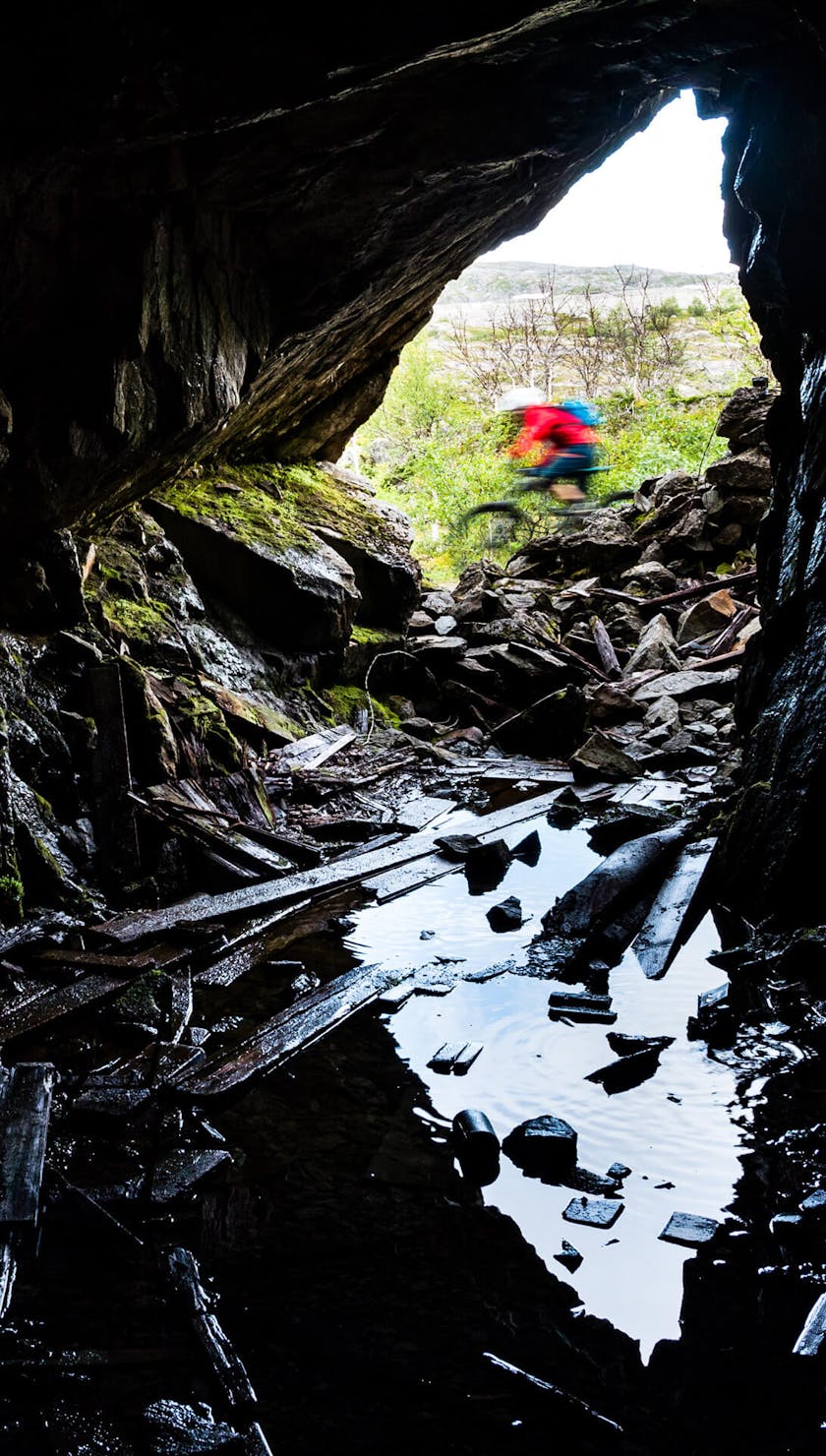
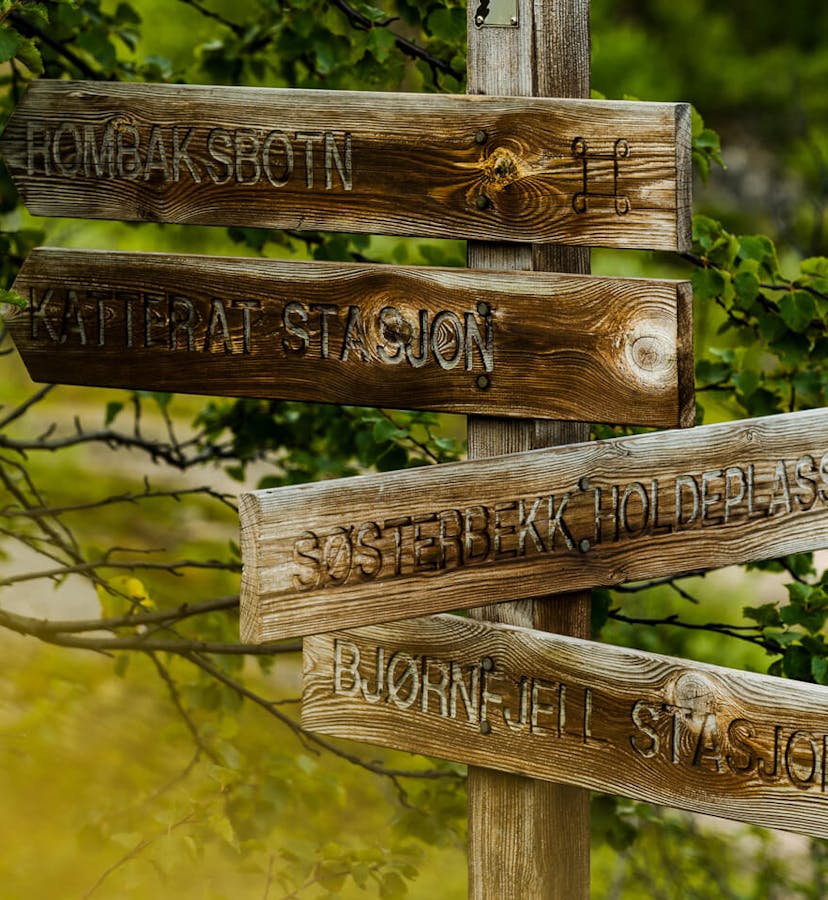

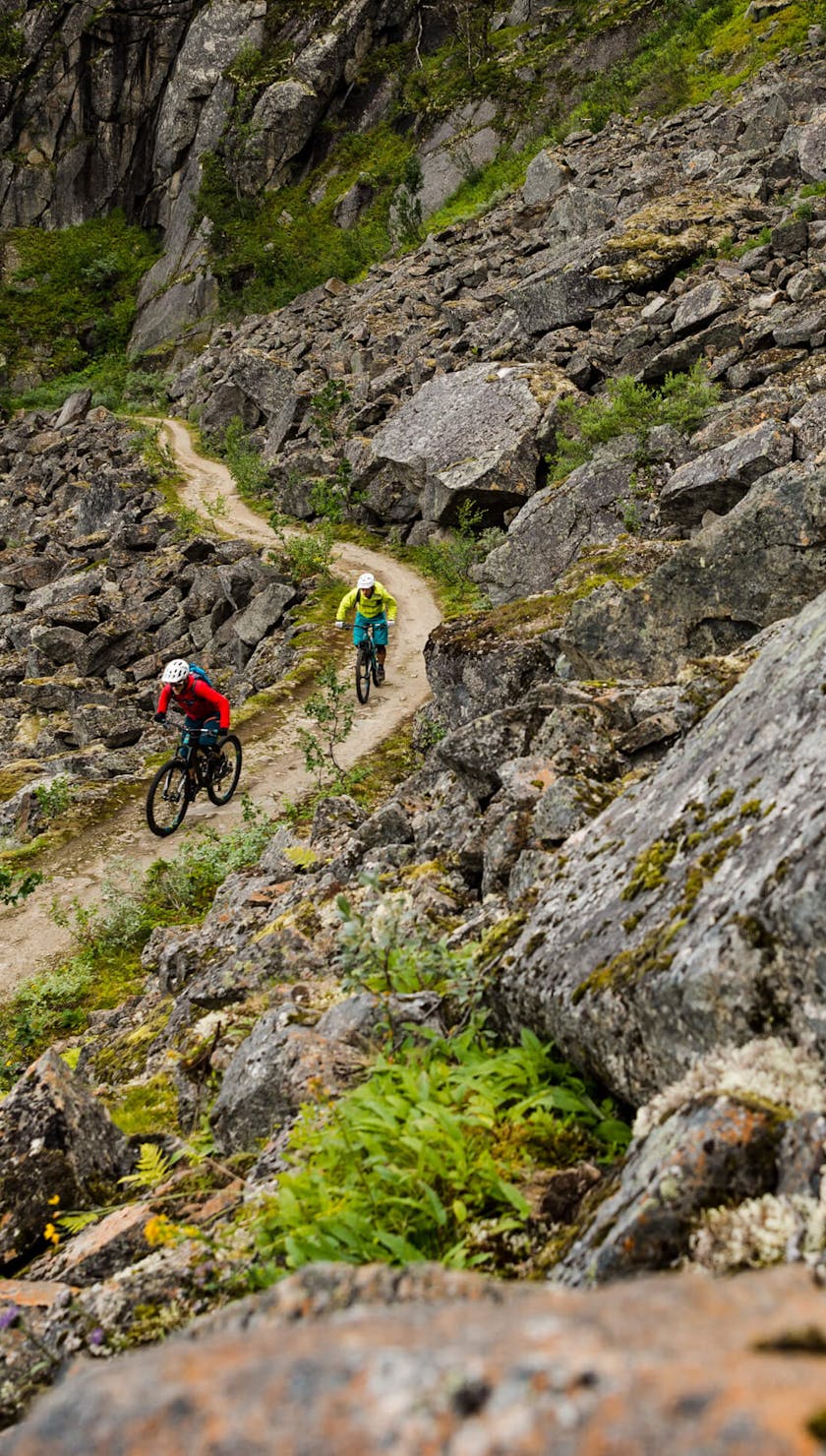
WE FOLLOW THE OLD RAILWAY TRANSPORT ROUTE FROM THE LATE 1800S. SOON WE PASS THE ACTUAL BORDER, BUT THERE IS NO ONE.
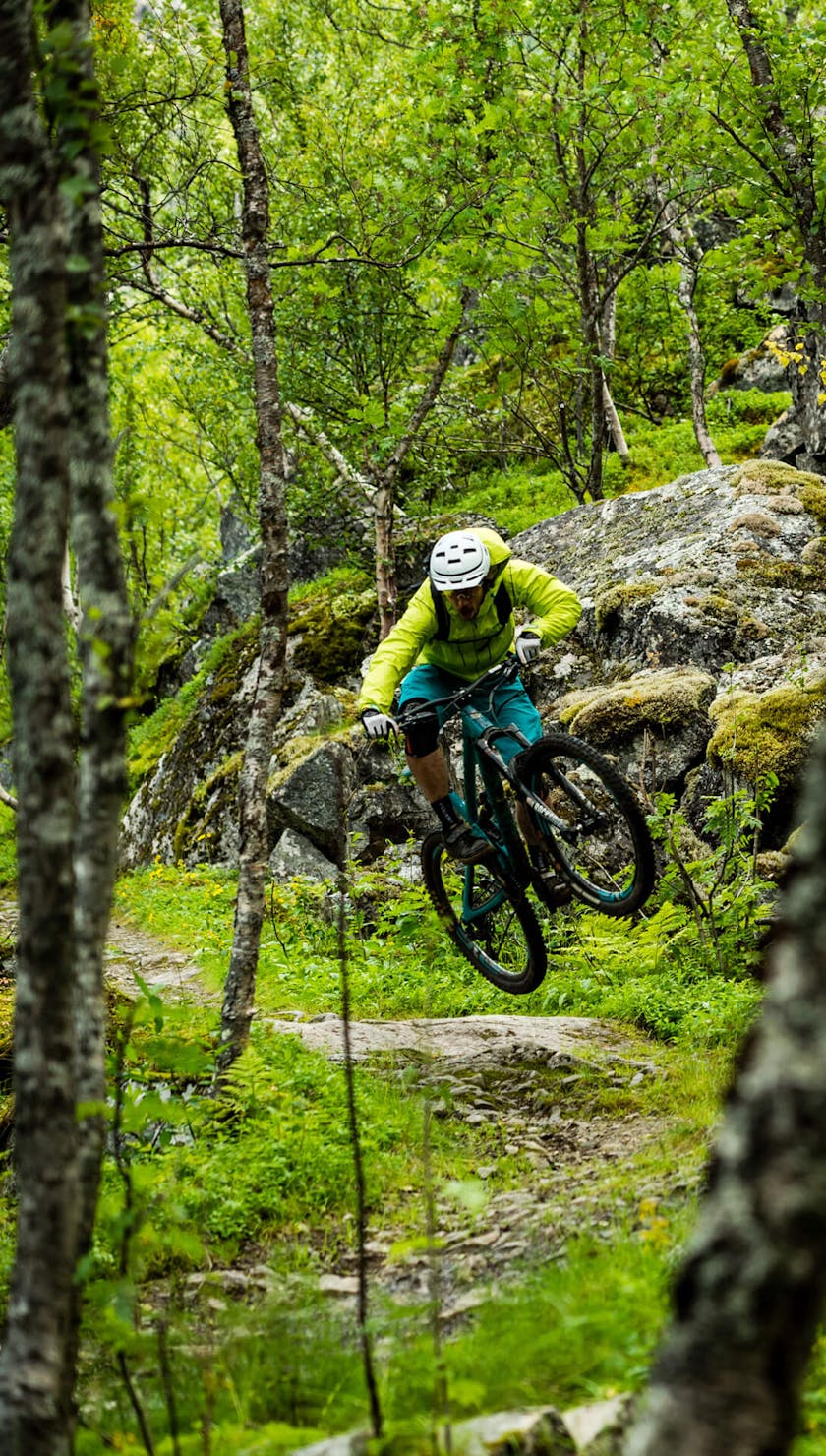
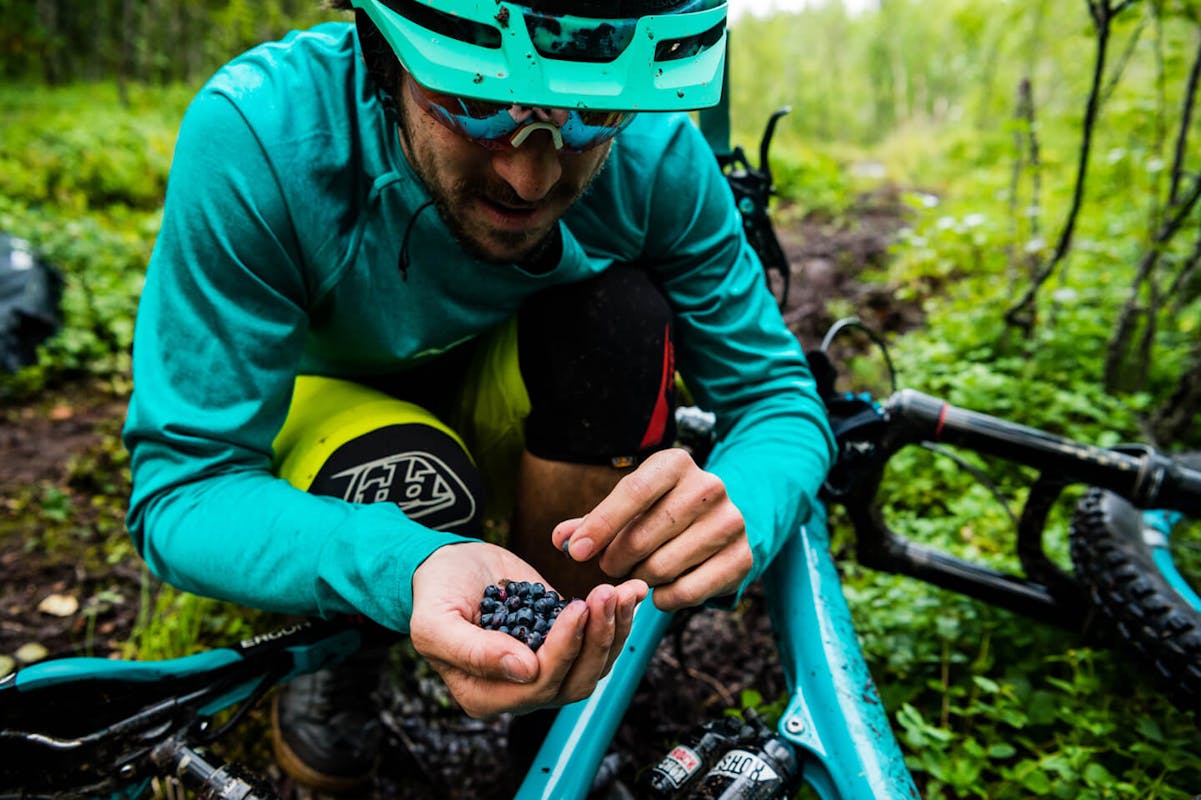
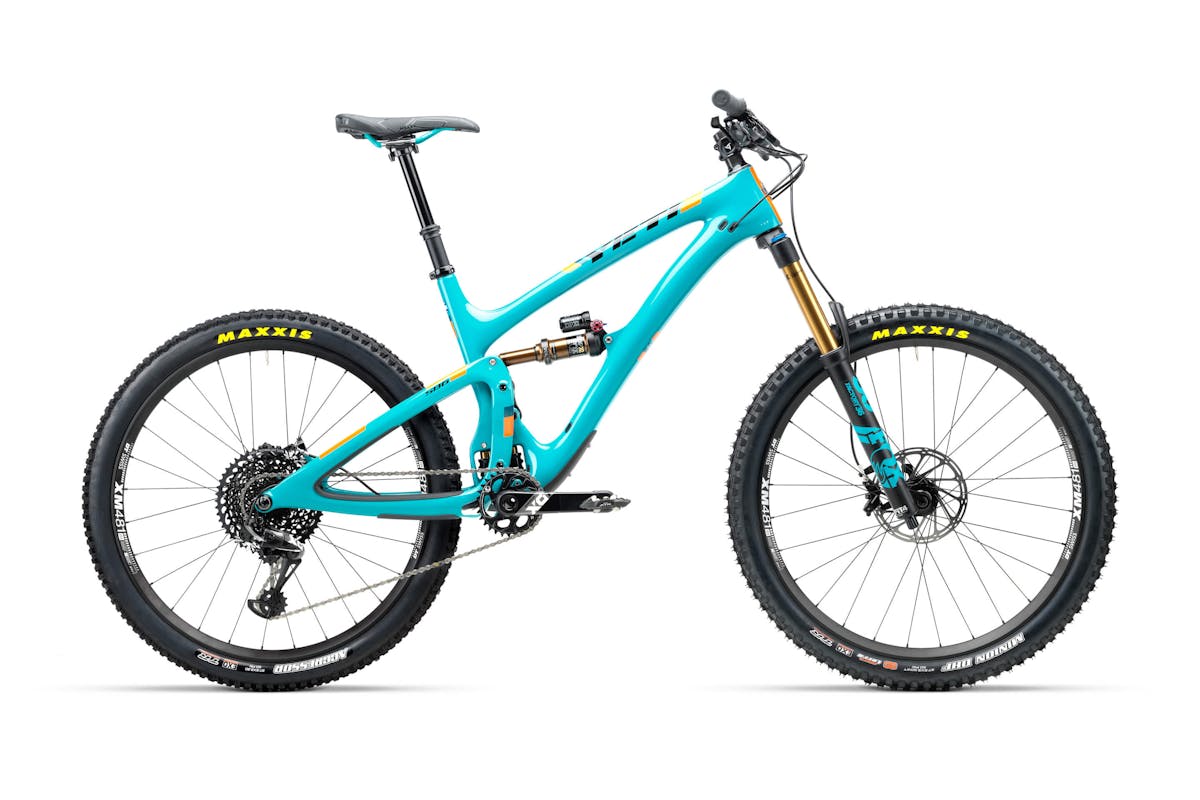
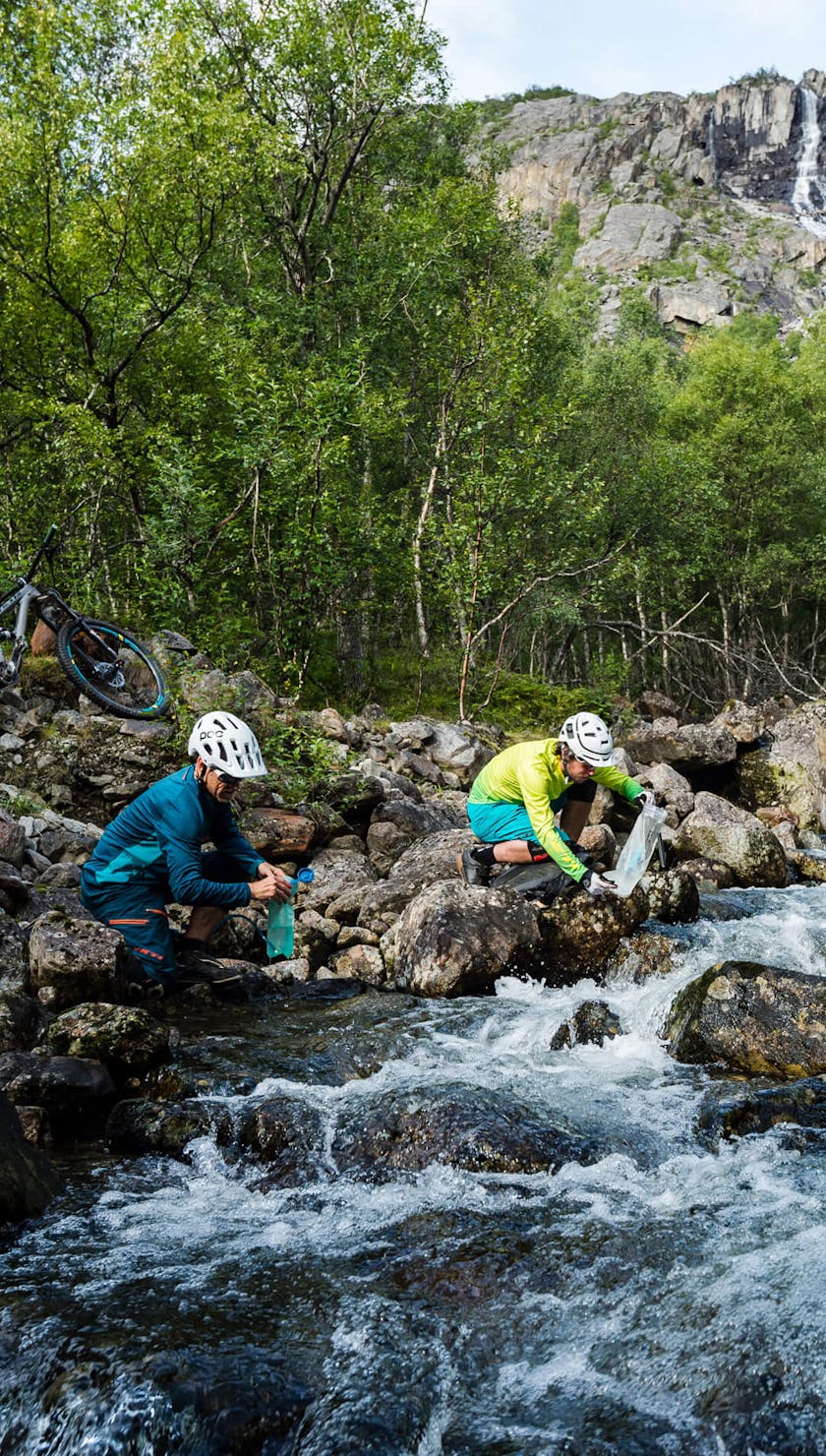
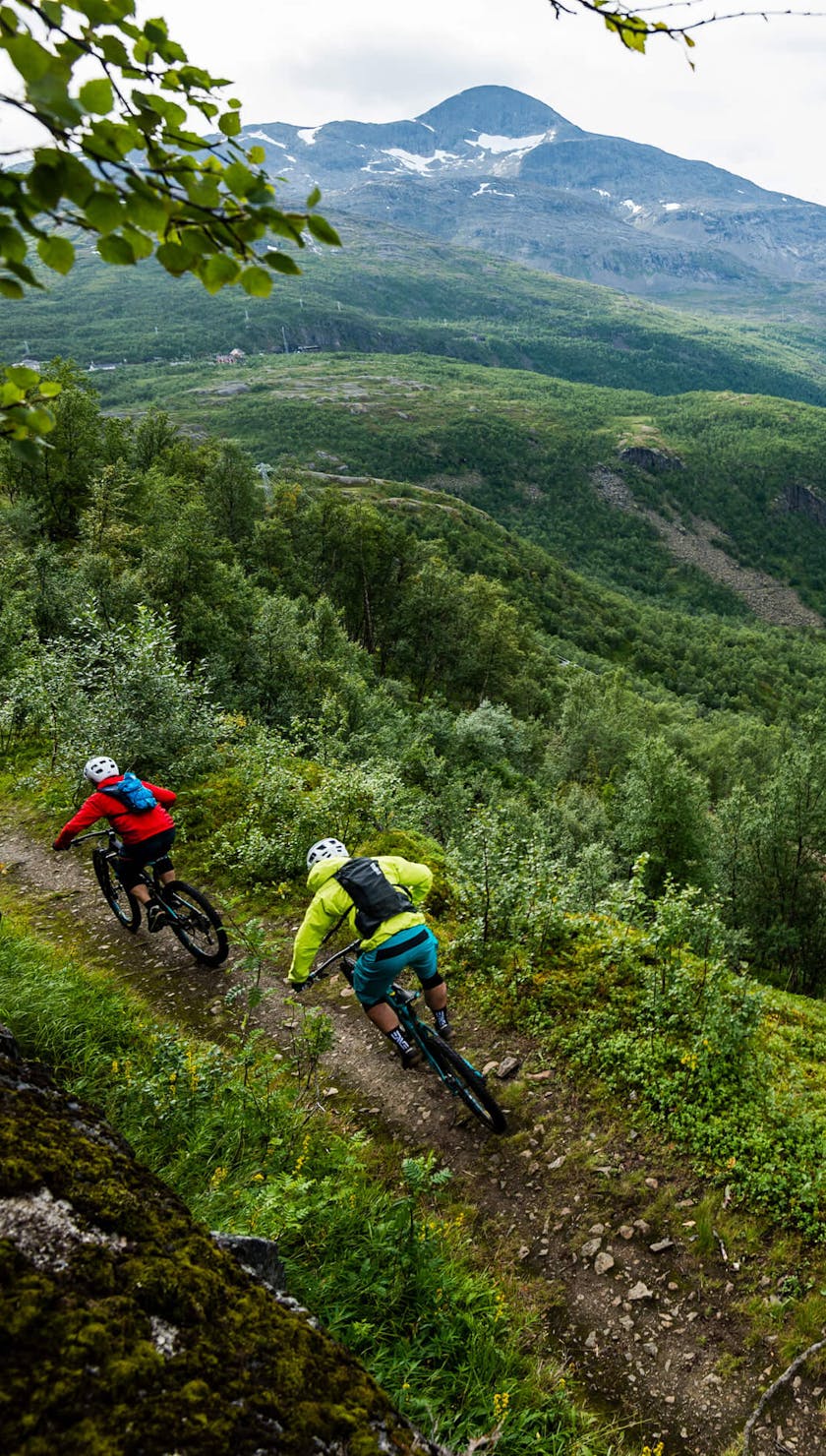
EVENTUALLY, WE DROP IN TOWARDS ROMBAKKSFJORDEN. THE PLAN IS TO MEET A CAPTAIN AT 3 PM, SO WE DON'T HAVE TO PEDAL ALL THE WAY BACK TO NORWAY.
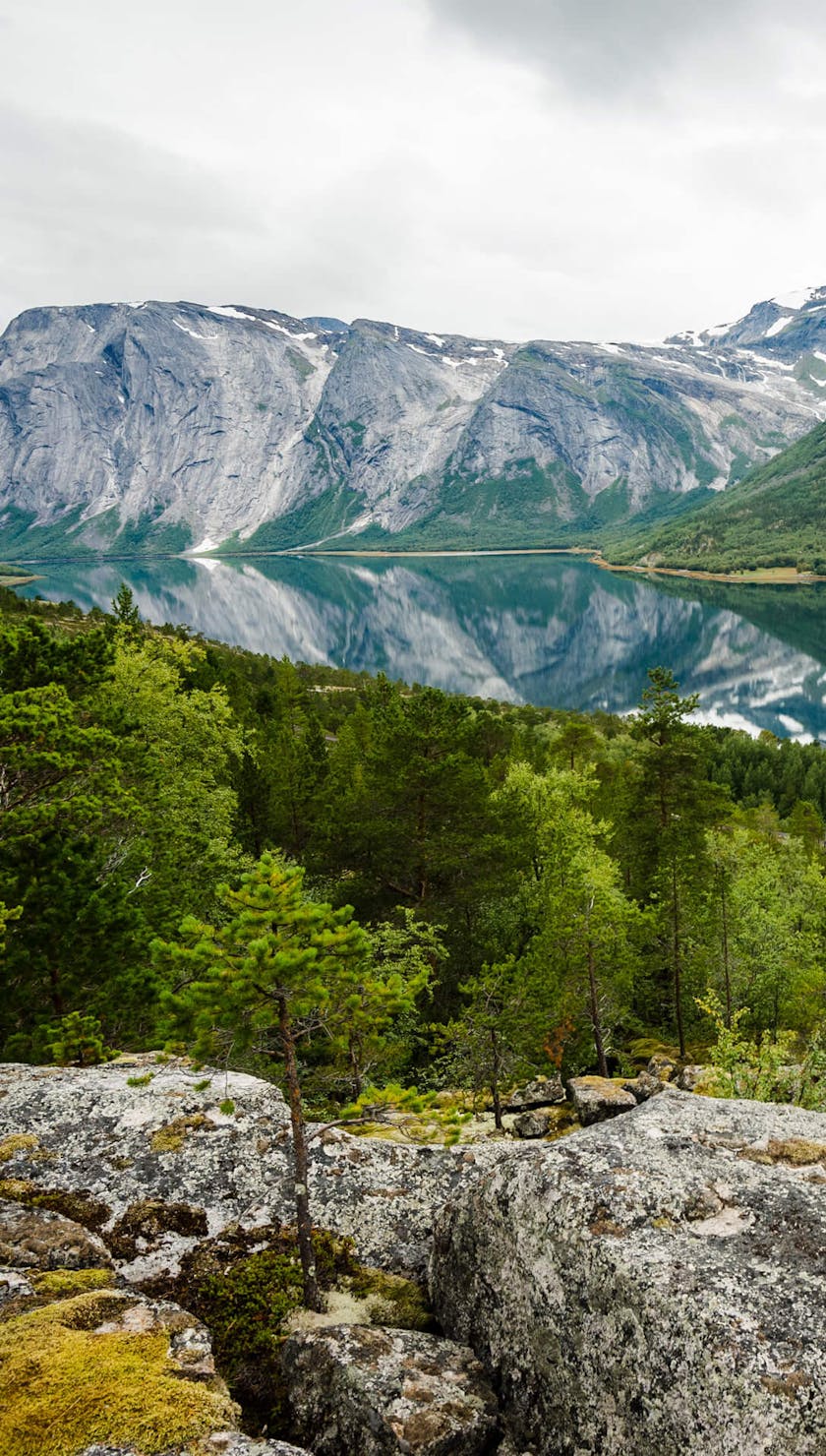
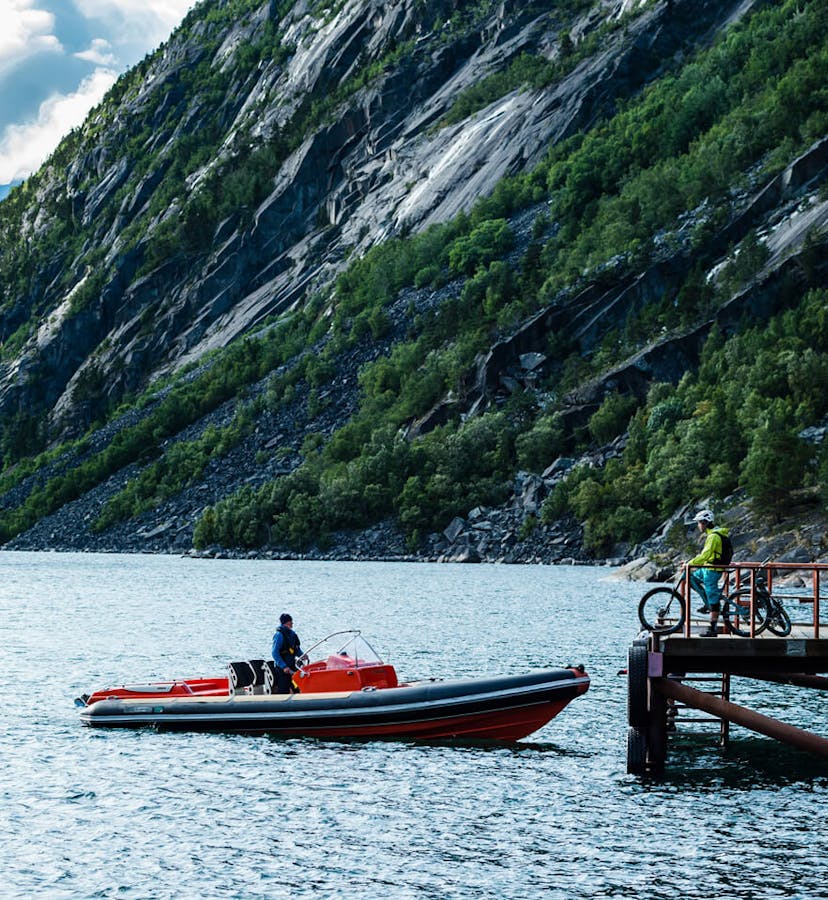

The closer to Narvik we come, the more enchanting the views become. The route takes us past beautiful old houses, quirky old bridges, and some epic scenery. Eventually, we need to drop in towards Rombakksfjorden, as our captain and his boat leave at 3 pm sharp. In the land of the fjords, often the most natural way to travel is on the water. If we miss that ride home, we have to pedal all the way back we came, then hitch a ride to Norway. A long and painful option I do not want to entertain.
With that in mind, we decide it is time to only enjoy the riding from here on – no more photos. After 30 minutes of flow through the ultra-green birch forest, we reach the beach at the fjord. Down here it is much warmer, and the sun has come out. It is time to strip a few layers and enjoy the sun before we board. What a beautiful ending of our adventures in the Arctic.
